Ronald.phillips
Shared posts
More People Need to Watch This Stunning Documentary on Netflix - CNET
Bruce Timm Hated The Network's Original Pitch For Batman Beyond
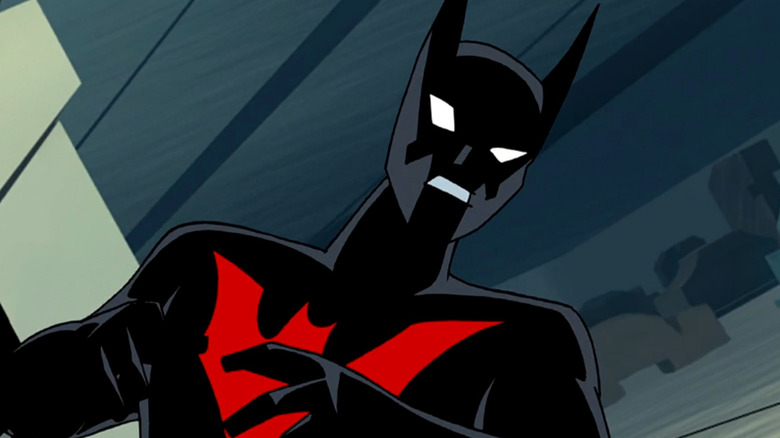
If there's one thing we know for certain about Batman, it's that the superhero has only one interpretation that works, and that any deviation from that interpretation will cause all the fans to reject the character outright. There's just no room in this world for funny versions of Batman, or grimdark versions of Batman, or futuristic versions of Batman, or young versions of Batman. At all. Ever.
(Hang on, I'm getting a note from my editor.)
Actually never mind, strike all that entirely. Because the exact opposite is true. Batman is one of the most adaptable characters in pop culture history and has been repeatedly redefined, redesigned, and reintroduced to audiences in a menagerie of different forms. Some were successful and some weren't, but none of them managed to ruin the character of Batman. Even with that being said, Bruce Timm, the producer of the groundbreaking TV classic "Batman: The Animated Series," actually despised the original pitch for the animated spin-off "Batman Beyond."
Let's talk about why.
Can't We Get 'Beyond' Batman?
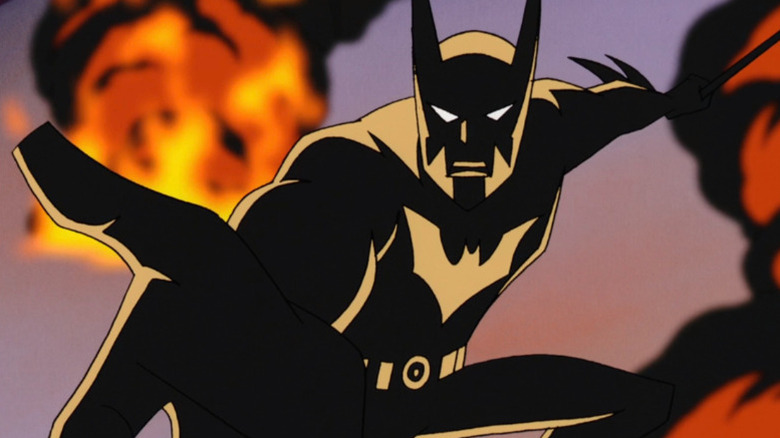
"Batman: The Animated Series" debuted in 1992, and although the show was clearly influenced by the German Expressionism-meets-gangster noir style of Tim Burton's blockbuster films, it quickly found its own voice. The series featured Bruce Wayne (voiced by the late Kevin Conroy) donning the Batman costume and doing battle with some of his most iconic villains, with classically melodramatic stories and animation that, especially for television in the 1990s, was ahead of the curve with its striking designs and fluid action.
The show was such a smash hit that multiple spin-offs were eventually released, including "Superman: The Animated Series," "Justice League," and "Static Shock." But one of the boldest extensions of "Batman: The Animated Series" was a futuristic version of the show, set in the far-off year of 2019 (ahem), where advanced technology has completely changed Gotham City into a dystopian world not entirely unlike "Blade Runner."
"Batman Beyond" saw the return of Bruce Wayne, but as a retired crimefighter who passes his mantle on to a teenage hero named Terry McGinnis. Since Terry doesn't have the luxury of spending years traveling the world and acquiring the original Batman's skills, Wayne equips Terry with an advanced suit of armor that gives him extraordinary abilities, including the power of flight, and he advises the rookie superhero from the safety of the Batcave.
"Batman Beyond" may not have been as huge a success as "Batman: The Animated Series," but the show was well-received. The show lasted 52 episodes over the course of three seasons, and spawned the acclaimed movie "Batman Beyond: Return of the Joker" in 2000, as well as a short-lived animated spin-off series called "The Zeta Project."
But despite all of that success, at first, Bruce Timm just wasn't interested.
The Bat Pitch Project
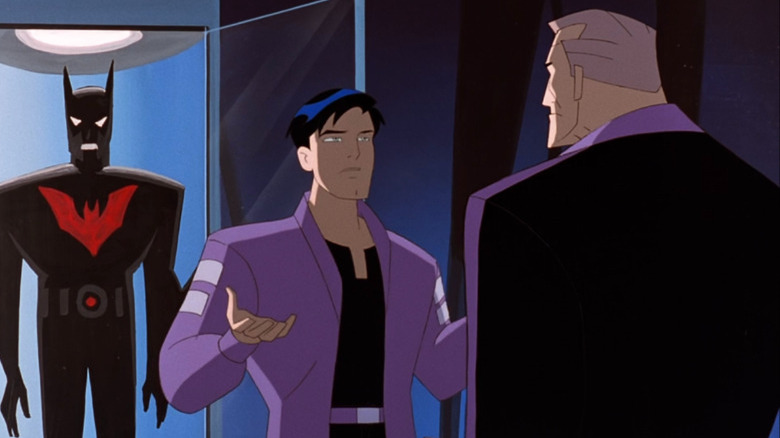
Don't judge Bruce Timm too harshly, because the origin of "Batman Beyond" was a network pitch that had very little to do with what the actual series would become.
In a meeting with Jamie Kellner, who was currently the head of WB television, Kellner told Bruce Timm and fellow producers Alan Burnett and Paul Dini that he wanted another Batman series. Except this time, Bruce Wayne would be a teenager. According to an oral history collected by IGN, Bruce Timm did not take the suggestion well:
"I'm not sure I can adequately describe [my feelings] at that moment. It was surreal and disappointing, shocking, and dream-like. Like this can't be happening. It was not the words I expected to hear, let's just say that [...] We were in the middle of doing our second iteration of Batman, 'The New Batman Adventures.' We'd found our groove, we were digging the look of the show, we were digging the scripts and stuff, we were on fire."
"So to have the rug pulled out from under us," Timm added, "It was just like, 'Oh God, seriously?'"
Timm's fear was that Kellner's pitch wouldn't add to the continuity they had been building with "Batman: The Animated Series" and "Superman: The Animated Series," but overwrite it completely. Not wanting to lose their years of hard work, Timm decided to approach the idea from a new angle — an idea that went beyond (ahem) Kellner's original pitch.
"I said, 'So if there was some way that we could come up with a teenage Batman show that was still in continuity, that's still built off of the shows that we had already done, the only way really to do that is to go forward into the future and introduce a new character, a new Batman.'"
Son Of A Pitch
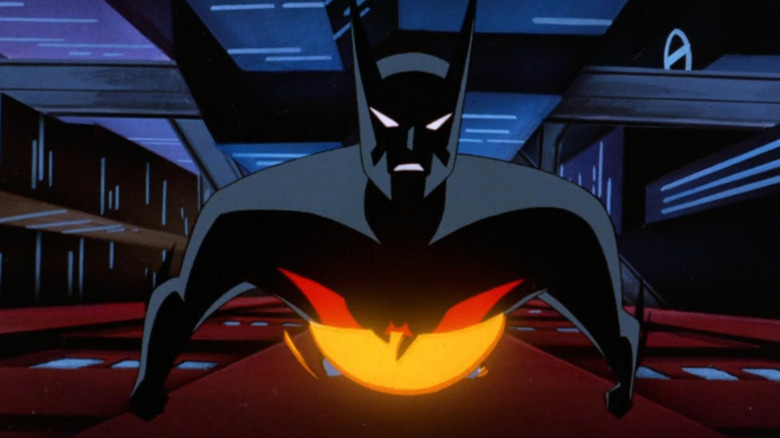
Working with James Tucker, a storyboard artist and character designer who would go on to direct multiple episodes of "Batman Beyond," Bruce Timm and Alan Burnett developed the idea of young Terry McGinnis working with an elderly Bruce Wayne. The idea would kill two birds with one stone, de-aging the character of Batman while simultaneously incorporating a suggestion the network and toy company had been pushing for: Batman in the future.
"If the network wanted a future show," Tucker told IGN, "this was how they wanted to do it." Jamie Kellner's reaction to the updated pitch, however, was not quite what Timm expected:
"I'll never forget, Jamie's reaction was ... it was kind of odd, and I remember this specifically. He said, 'Yeah, it's like the new generation of samurai passing his sword onto his protégé.' And I thought, 'Well, I don't really know what that's about, but yeah. Yeah, like that,'" Timm said.
Kellner liked the idea and told Timm to make the show, but there was just one problem. "I said, 'So great, so the next steps are what? We'll go off and get something on paper and start developing?'" Timm remembered. "He said, 'Oh no, no. You got a green light. I want this show for next fall'", recalled Timm. "And we're just like, 'Uh, what?' It was that immediate."
Batman: Into The Spider(ish)-Verse
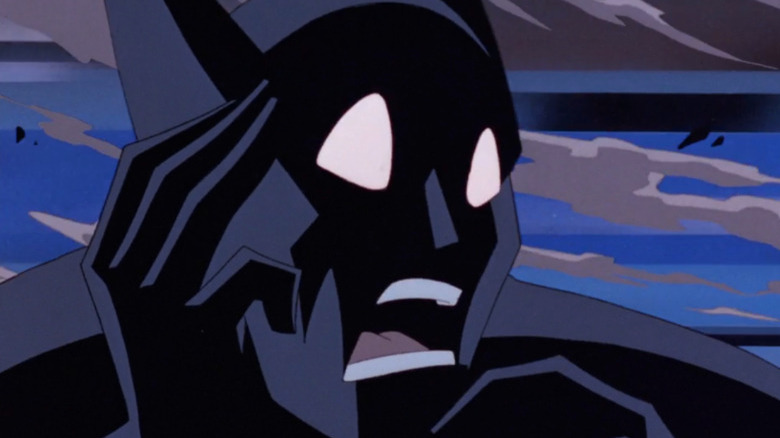
So "Batman Beyond" was getting made, and fast, but the producer of the series still wasn't completely sold on his own idea. "Paul [Dini] and Alan [Burnett] and I walked out of the room and we met in the parking lot as we're getting into our cars and just kind of b****** and moaned about it," Bruce Timm told IGN. "It was like, 'Oh, I don't want to do this stupid show, I don't want to do teenage Batman, blah, blah, blah.'" he continued. "We wanted to keep doing the show we were doing, even though we knew that was pretty much a lost cause, so we just kind of walked away, grumbling, not really very enthusiastic about it."
It wasn't until Timm spoke to producer Glen Murakami a few days later that Timm finally acknowledged the potential of the show. And ironically, that potential had less to do with the DC superhero Batman than it did with Marvel superhero Spider-Man. Murakami thought a futuristic show with a teenage Batman would be a great way to incorporate elements of the Spider-Man character. "With the tortured hero, he's got to balance his schoolwork and his love life and being a superhero," Timm recalled. Murakami's input was a game-changer, and Timm was suddenly a lot more interested in a stylish, futuristic version of Gotham.
The rest, as they say, wasn't history: It was the future. The "far-off" future of 2019, that is.
Read this next: Every DC Movie Made Prior To The DCEU Ranked From Worst To Best
The post Bruce Timm Hated the Network's Original Pitch for Batman Beyond appeared first on /Film.
The Witcher 3 Next-Gen Gameplay Shown, PC Gets Ultra+ Settings and DLSS, FSR 2 Supported on PS5/XSX

The wait for the “next-gen” update for The Witcher 3: Wild Hunt is almost over, and today CD Projekt Red finally unveiled a look at the game’s newly-implemented ray tracing and other visual features. They also showcased other new features, including Photo Mode and new camera angles, and provided a peek at some content inspired by the Netflix series. You can check out a quick The Witcher 3 next-gen trailer, below.
If you’d like a more in-depth deep dive, you can check out CD Projekt Red's livestream.
Getting into the nitty gritty, on PC, The Witcher 3 will boast ray-traced global illumination and shadows, although no reflections (expect updated screen space reflections there). The overall visual splendor of the game has also been bumped up yet another notch with new Ultra+ settings for those of you with beefy rigs to play with. And even if your PC isn’t quite state of the art, CDPR has added DLSS and FSR 2 support so you can coax the best possible performance out of the game.
So, that’s PC, but what about the next-gen consoles? On the PS5 and Xbox Series X you’ll be getting a 4K/30fps Quality mode and 60fps Performance mode (they didn’t specify what resolution you can expect for the latter). In Quality mode, you can look forward to the same ray-traced global illumination and shadows you get on PC, and visual detail will be at around Ultra quality. Performance should be solid as CDPR has implemented FSR 2 on consoles. Less information has been provided about the Xbox Series S, but it will be getting a 60fps mode. Oh, and PS5 players get a small bonus, as the game will now fully support the Dualsense controller’s haptics and adaptive triggers.
The Witcher 3 next-gen update arrives on PC, Xbox Series X/S, and PS5 on December 14. What do you think? Ready to jump into the game again?
The post The Witcher 3 Next-Gen Gameplay Shown, PC Gets Ultra+ Settings and DLSS, FSR 2 Supported on PS5/XSX by Nathan Birch appeared first on Wccftech.
Microsoft: ‘Sony has more exclusive games … many of which are better quality’
Sony has more exclusive games than Xbox does, according to Microsoft, which claims that many of its rival's first-party titles "are better quality." Lest you believe Microsoft is dunking on its own game studios for no reason, the company made the assertion in a filing with the UK's Competition and Markets Authority (CMA), which is conducting an in-depth review of the planned Activision Blizzard acquisition. Although the filing is dated October 31st, Eurogamer notes that the document has just been made publicly available.
"In addition to being the dominant console provider, Sony is also a powerful game publisher," Microsoft wrote in its response to the CMA. "Sony is roughly equivalent in size to Activision and nearly double the size of Microsoft's game publishing business." The company added that "there were over 280 exclusive first- and third-party titles on PlayStation in 2021, nearly five times as many as on Xbox."
Along with Sony's own franchises — such as The Last of Us, Ghost of Tsushima, God of War and Spider-Man — the company signs deals with third-party publishers for exclusive rights to games. Microsoft cites Final Fantasy 7 Remake and Bloodborne, as well as the upcoming Final Fantasy XVI and Silent Hill 2 remake as major titles that aren't or won't be available on Xbox.
Console exclusives account for a higher percentage of global game sales for Sony than Microsoft, the latter claimed (Sony just revealed that it sold 5.1 million copies of God of War Ragnarok in the game's launch week). However, many Xbox players opt to access Microsoft's exclusives through Game Pass instead of buying them outright — a point that Microsoft doesn't touch on while discussing the companies' sales proportions for their exclusive games.
In addition, Microsoft pointed to review scores for PlayStation and Xbox games. "The average Metacritic score for Sony’s top 20 exclusive games in 2021 was 87/100, against 80/100 for Xbox," Microsoft claimed.
Microsoft is spotlighting these factors because game exclusivity and competition concerns are important considerations that regulators reviewing the proposed Activision buyout are exploring. From Sony's perspective, one of the key sticking points of the Activision merger is the possibility that Microsoft will make the Call of Duty franchise (said to be worth hundreds of millions of dollars a year to PlayStation) exclusive to Xbox. Microsoft said it offered Sony a 10-year deal to keep Call of Duty on PlayStation earlier this month. Nevertheless, Microsoft claimed in the filing "it is implausible that Sony, the leading console with a more than 2-to-1 lead, would be foreclosed as a result of not having access to a single franchise."
Microsoft Gaming CEO Phil Spencer suggested on The Verge's Decoder podcast last week that the Activision deal was largely about scooping up mobile gaming giant King. Mobile "is a place where if we don’t gain relevancy as a gaming brand, over time the business will become untenable," Spencer said. (Xbox Cloud Gaming runs on phones and tablets as well.)
Microsoft doubled down on the mobile side of the deal in its CMA filing. "As it stands, Xbox has no material presence in mobile and its ability to reach gamers on mobile is impeded by Apple and Google’s effective duopoly in the provision of mobile app stores. The acquisition of Activision provides Xbox with capabilities and content on mobile, which it currently lacks, while creating new distribution options for game developers outside of the mobile app stores." Of note, the CMA said this week it's investigating Apple and Google's "stranglehold over operating systems, app stores and web browsers on mobile devices."
This isn't the first time Microsoft has tried to downplay the significance of the proposed $68.7 billion Activision deal. It claimed over the summer that Activision Blizzard has no "must-have" games, despite being behind the likes of Call of Duty: Modern Warfare II (which raked in $1 billion in sales in 10 days), Overwatch 2 (35 million players in its first month), World of Warcraft and Candy Crush Saga (3 billion downloads since launch). Activision Blizzard's games had 368 million monthly active users last quarter. However, Blizzard stands to lose millions of players in China when many of its games go offline there in January.
Every Grill Master Deserves this Fantastic Black Friday Smart Thermometer Deal - CNET
What Is Dollar-Cost Averaging Investing and How Does It Work?
Dollar-cost averaging is a popular investment strategy used in many financial markets as it has proven reliable in different market situations. Knowing how it works could help you manage your investments better, especially in the highly volatile crypto market. Let's quickly look at how this popular strategy works and its benefits and drawbacks.
The Witcher 3: Wild Hunt Next-Gen Update Hits Xbox Series X|S on December 14
Summary
- Next-gen update is free for all current owners of The Witcher 3: Wild Hunt on Xbox One.
- Includes Performance and Quality modes, the latter implements Ray Tracing features.
- Community-made mods and CD Projekt Red gameplay/content additions are baked into the game.
- Features free Netflix “The Witcher” series-inspired DLC, including a new quest.
- Cross progression lets you bring saves from and to other platforms.
Get ready to explore the dark fantasy realm of the Continent in The Witcher 3: Wild Hunt Next-Gen Update. Whether you’re stepping into Geralt of Rivia’s shoes for the first time, or you’re a hundred-hour monster-slaying veteran, there’s plenty of reasons to immerse yourself in this vast world of choice and consequence this winter. The next-gen update for Xbox Series X|S arrives on December 14. It’s free for all current owners of The Witcher 3: Wild Hunt on Xbox One, and is packed with improvements, new features, and extra content to bring this beloved RPG into a more modern context. So, let’s see what’s in store!
First, technical upgrades. Xbox Series X players can select from Performance and Quality modes. Performance prioritizes framerate at 60FPS, while Quality prioritizes visual fidelity at 30FPS. In Quality mode, Ray Tracing comes into play with Ray Traced global illumination and ambient occlusion bringing more realistic overall lighting and surface lighting effects. Xbox Series S players can select between dedicated 30FPS and 60FPS modes, with the former presenting the game with better textures and at higher resolutions, and the latter presenting a smooth 60FPS experience. In addition, Xbox Series X benefits from FidelityFX Super Resolution (FSR), a powerful upscaling technology which boosts framerate, and uses a spatial upscaling algorithm to maintain high visual quality.

The next-gen update also comes with integrated mods. The modding scene for The Witcher 3: Wild Hunt has always been vibrant and impressive, and we’ve curated a selection of mods to include improvements with a wide scope, such as reworked textures and character models up to 4K, refreshed monster models, visual bug fixes, immersion tweaks, and even map inconsistency fixes. It’s been great to implement community-made mods to help make this version of the game as beautiful, consistent, and up-to-modern-standards as possible.
We also have gameplay/content additions created by CD Projekt Red in-house. We scoured hundreds of mods and community requests to see what would make smart additions, and the effect is a more streamlined gameplay experience, with our own improvements on textures, character models, and cutscenes added as well. There are too many to mention here, but some additions of note include quick sign casting, making it simpler and more intuitive to cast Witcher signs in combat (no need to fiddle around with the radial menu and accidentally choose Yrden when you want Igni), more UI and map customization options, an alternative camera, environmental and character model improvements — enjoy the vastly better looking vegetation — faster herb looting that skips the loot selection window, and bug fixes which resolve some issues that the community has been aware of for quite some time.

As for new content, Witcher worlds are colliding with free DLC inspired by “The Witcher” Netflix series. We know this will be the first time some players will be playing Wild Hunt, and it’s likely that a number of these players will come to the game after watching the live-action Netflix series. Now players will be able to equip items and gear inspired by both seasons 1 & 2! We have two new armor sets and a steel and silver sword for Geralt to wield, an alternate outfit for Dandelion, and new armor for Nilfgaardian soldiers. And tying into this batch of free DLC is an all-new quest, “In the Eternal Fire’s Shadow”. These additions bring something cool for old and new players alike, bridging the worlds of the show and the game while also giving experienced players some fresh gear and some new action in the form of the quest. These items and the quest are also coming to Xbox One, by the way!
Another cool feature to bring attention to here is cross progression. Xbox players will now be able to seamlessly take their saves to other platforms thanks to the Cloud. Say you have an old save from six or seven years ago on your Xbox One — well, now you can portal that save into the next generation on Xbox Series X|S and finish up your playthrough!
There are many other elements that players will see when they get their hands on the game, and you can see the game in action on a recent REDStreams broadcast. This next-gen update is free for all current owners on Xbox One. And if you own the GOTY Edition, you’ll get a free upgrade to the Complete Edition, which includes the Hearts of Stone and Blood and Wine expansions. Right now, save big on The Witcher 3: Wild Hunt during the Xbox Black Friday sale ahead of the next-gen update.
This is a super special release for us. Veteran players get to rediscover what they loved about the game with a fresh, next-gen lens, and new players are in the envious position of discovering this epic RPG for the first time in the best way possible. That’s definitely something to be jealous of!

The Witcher 3: Wild Hunt – Game of the Year Edition

The Witcher 3: Wild Hunt
The Mist Stirs – Join the Valheim Public Test to Preview of the Latest Biome!
It’s Time to Start Skilling with Smite x RuneScape, Along with a Futuristic New Battle Pass
Check Out What’s New in Rumbleverse Season 2 – Now Available for Xbox
[News] SINPHONY: A CLUBHOUSE HORROR ANTHOLOGY Arrives on DVD Nov 29
![[News] SINPHONY: A CLUBHOUSE HORROR ANTHOLOGY Arrives on DVD Nov 29](https://i0.wp.com/www.nightmarishconjurings.com/wp-content/uploads/2022/11/Sinphony-DVD-Cover-300dpi-RGB.jpg?resize=640%2C902&ssl=1)
These nine visions of horror were conceived of and curated entirely on Clubhouse, the audio-based social media platform for casual, drop-in audio chats with friends and new people around the world to tell stories, ask questions, debate, learn, and have impromptu conversations on thousands of different topics.
Conceived and curated entirely on the popular, audio-based social media platform Clubhouse and produced by Screen Anthology, SINPHONY: A CLUBHOUSE HORROR ANTHOLOGY features a group of international filmmakers each exploring a character dealing with tragedy caused by a supernatural entity.
The directors contributing segments to the film include a new who’s who of horror: Haley Bishop, Jason Ragosta, Sebastien Bazile & Michael Galvan, Mark Pritchard, Kimberley Elizabeth, Jason Wilkinson, Nichole Carlson, Steven Keller and Wes Driver.
SINPHONY’s shocking stories include: an innkeeper’s growing concern about his secretive new guests; a contractor who inhales mold spores that lead to murder; a couple confronting the fact that one of them is a ghost; a witch protecting her child from a killer; a dance craze that has dire consequences, and much more
The large cast includes Haley Bishop, Stella Stocker, Kristine Gerolaga and Alysse Fozmark.
The post [News] SINPHONY: A CLUBHOUSE HORROR ANTHOLOGY Arrives on DVD Nov 29 appeared first on Nightmarish Conjurings.
Grab the retro Metroidvania game Narita Boy for free at GOG
Get the retro-inspired Metroidvania Narita Boy for free on PC via GOG in a brand new free game giveaway! Available for 48 hours only so grab your free game copy while you can!
The post Grab the retro Metroidvania game Narita Boy for free at GOG appeared first on Indie Game Bundles.
Strange World Producer Roy Conli On Primal Outpost, Altering Characters, And More [Exclusive Interview]
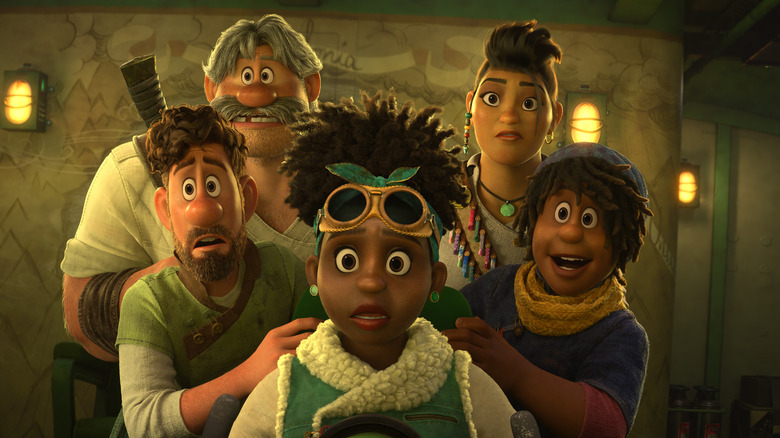
Disney Animation's latest feature, "Strange World," hits theaters today. The film is an adventurous romp that focuses on themes of father-son relationships and taking care of where you live -- not only for yourself, but for future generations. It also has some twists and surprises that I highly recommend you avoid finding out about before you see the movie.
In "Strange World," we follow the Clade family — grandfather Jaeger Clade (Dennis Quaid), father Searcher Clade (Jake Gyllenhaal), mother Meridian Clade (Gabrielle Union), and 16-year-old Ethan Clade (Jaboukie Young-White). Along with their town's leader, Callisto Mal (Lucy Liu), they go on a journey underneath their land and find themselves in a very strange world indeed.
I recently spoke once more with "Strange World" producer Roy Conli before the feature's release. We veered away from major spoilers in the film, but touched on the characters (and the actors who play them), how the creative team met with Disney game team to create the movie's prevalent board game, and why Ethan Clade is such a great character.
This interview has been lightly edited for clarity and brevity.
'What Are We As Fathers Going To Leave Our Sons, And What Are Our Sons Going To Leave Their Sons?'
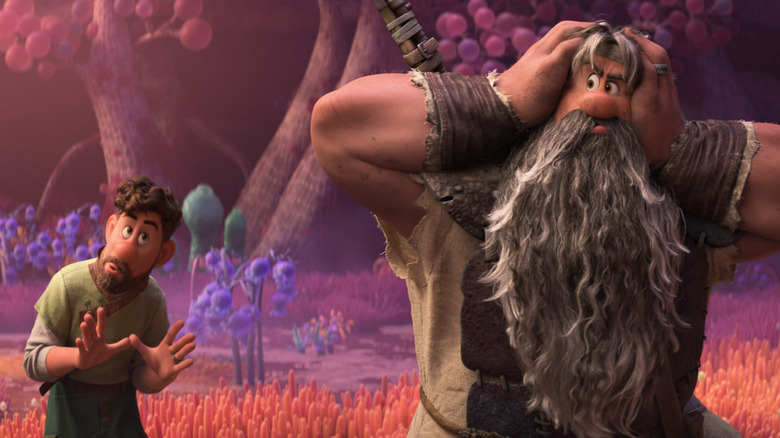
You mentioned in our earlier conversation that one of your favorite things about the movie was the message it had about protecting the environment. Now that I've seen "Strange World," I wonder if you could expand on that a little bit — when you first heard of this project, how was it pitched to you? Was the environmental message part of it, or was it more the father-son story that was the main focus?
The wonderful thing about this project has been that from a thematic standpoint, it's really been solid. So many films that I've worked on, you find that you're chasing theme. You go in with an idea, and then once you get it up on the screen -- because we do several iterations -- you just sit there and you go, "Oh, the theme is actually this." Or, "Oh, the theme is that." And what's wonderful is during that period, all those little pieces of themes that you've been traveling through, connect.
We walked in on this and the environmental story, the three generational story, and the familial aspect of this was there. And we've never really been chasing theme on this one. When I heard about it the first time, [director Don Hall] pitched me the story, I was taken with the three generation element of it because I love father-son stories. I mean, it's something that I've loved since I was a kid, reading. But then also, it's that big theme of: What are we going to leave the next generation? What are we as fathers going to leave our sons, and what are our sons going to leave their sons? I think it's so important and so pressing in terms of today.
Absolutely. And that's interesting how it was a package deal.
Yeah. It's so wonderful working with Don because I think he creates these amazing worlds that are theme-rich. And the great thing is that these incredibly diverse and inclusive worlds are reflective of ours, but you can only visit them in animation. You couldn't go to "Strange World" in our world. So to me, that was the other element that really drew me in, was how this was so right for animation.
'The Heart Of Ethan Is So Pure, And That's Why We Love That Character So Much'
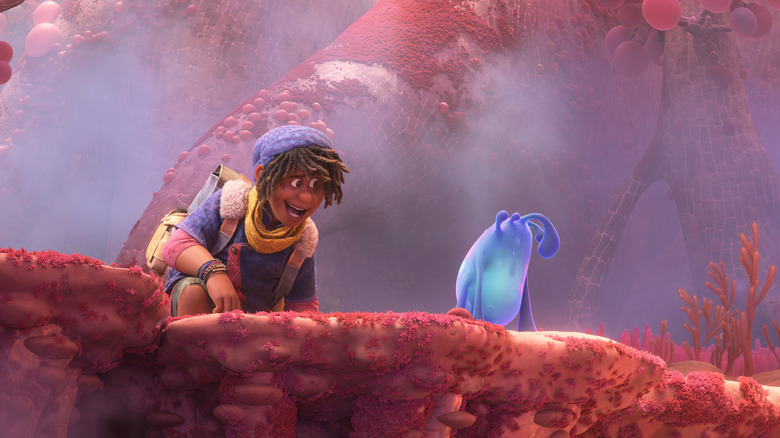
One of the things I also loved about it is that Ethan is gay and he has a crush, and it's totally not a big deal for anyone, which is such a nice thing to see. I'm so happy that so many kids are going to be able to see that in a Disney film. Was that also always part of the story?
From day one. And again, the wonderful thing about Don, too, is creating these wonderfully diverse worlds. It was something that we fell in love with: this character's compassion. And he's such a wonderful human being that it was just part of who he is.
He's one of the most with-it characters, I think. His mom, too.
I'm a big fan of Meridian [Ethan's mom]. I think Meridian, she is the glue because she's able to see those three generations and communicate with them all, in a weird way. The thing is so paralleled in terms of character to theme — you have Jaeger, who is the conqueror, you have Searcher, who is the controller, and then you have Ethan as the conservationist. Searcher wants to control nature because he's a farmer. And Jaeger wants to conquer it. But the heart of Ethan is so pure, and that's why we love that character so much.
'He Went Away And Wrote A Suite For The Film Before He Ever Started Putting Anything To Picture'
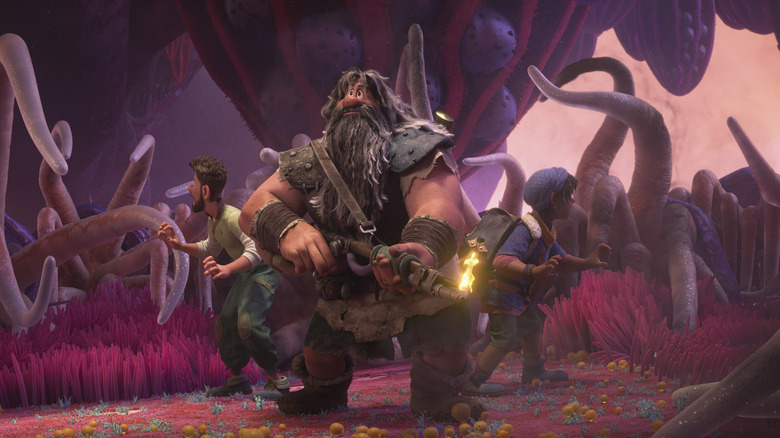
Yeah. Another thing that really made an impact on me was the music. I would love to hear more about how that score came about and how the creative process for that went.
Henry Jackman, our composer, I think is brilliant. And not only is he brilliant, he's a really good friend of ours. We worked together on "Big Hero 6." He worked with Don on "Winnie the Pooh" back in the day.
Henry is a storyteller, and he's able to help support story through his music. And early on we were showing him reels. We do iterations of animatics of the whole film. We showed him an early iteration, and he went away and wrote a suite for the film before he ever started putting anything to picture. And that suite, which is essentially played at the very end, for the end credits, that suite defined the themes in the film. I mean, it's great because everyone on this film, from our technical staff to our animators, to our technical animators who make the hair wave, they bring something to the film, and it's always focused on what makes the best story. That was something that Henry did as well. I think he helped support the story with his music.
'For This Board Game, It Was Really About Creating A Civilization That Functions'
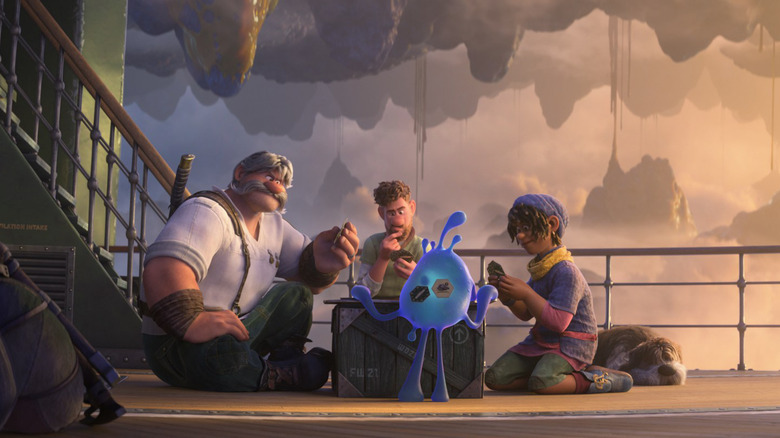
Another thing I thought was fun was the board game, Primal Outpost. I loved it just as a game and also how it functions as a metaphor in some ways. How did that become part of the story, and does anyone know the actual rules of that game to play it?
It's funny because we met with the Disney game team, and we sat down and asked, "Okay, what is this game going to be?" Because you've got certainly the video games, but we thought in this film we didn't want to bring a video game into it. This world was going to be powered but not necessarily have that element in it. We started getting into the different types of board games there are and the different iterations of those board games through the years.
For this board game, it was really about creating a civilization that functions. I think that, to me, is a great Gen Z kind of issue. When you look at the three generations and the conqueror, the controller, and the conservationist, it really does fit within the conservationist.
'When We First Met With Jake, It Was Clear He Wanted To Be Involved'
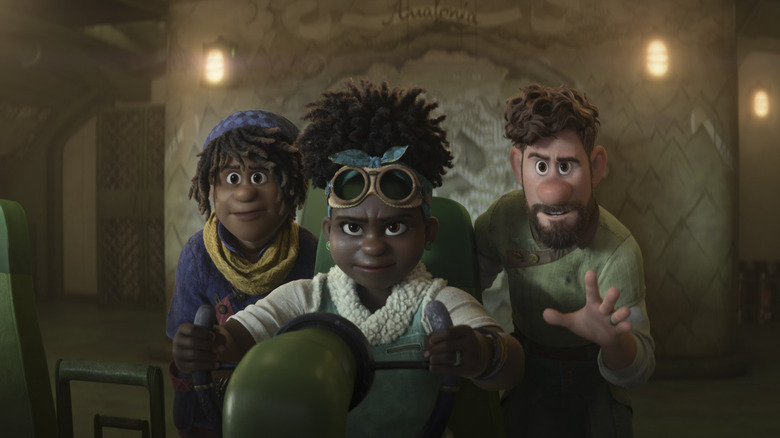
You mentioned earlier how you love the cast so much, and no argument here. When they were doing their parts, was there any particular ad-libbing they did that made it into the movie?
This is where Don is, I think, a brilliant director. Don does not come in with a solid preconceived idea of what he wants. He allows his collaborators to come in and help shape things. When we first met with Jake [Gyllenhaal, who voices Searcher], it was clear he wanted to be involved in helping create this character.
We did our first recording session in New York -- and we did a two-day recording session -- we decided that the first day, we were just going to get through the entire script so that Jake could learn the film. And then we were going to come back and focus on sequences that we wanted to put into production. Well, somewhere in the middle of that recording session, Jake said, "I don't think Searcher would do this." And we sat down and Don and [co-director and writer Qui Nguyen], we all sat down at a table and talked it through. Qui went away that night and rewrote the sequence. We came back the next day, recorded it, and it's in the film.
Gabrielle [Union, who voices Meridian] and Jaboukie [Young-White, who voices Ethan] are also phenomenal in terms of their improv. And then Dennis [Quaid] came in. We had pitched him the story. He came in, and he just had a take. The three of us looked at one another and went, "That's our Jaeger. That's our Jaeger."
I couldn't think of a better cast for this. And Lucy [Liu], too. With Lucy it was interesting because the character of Callisto changed.
How so?
Well, she was much more of a Jaeger type of character at first. And we thought, "Oh, god, it's too much ..." And we had pitched her that and then we went back to her and said, "Listen, we're thinking of changing this character." And she said, "Well, let's see what it is," because she really wanted to embrace that character. We went back to her twice because we wanted to work with her so badly. She totally embraced that. I mean, that's an amazingly subtle character, Callisto. Not only is she an explorer, but she's a leader.
"Strange World" is in theaters now.
Read this next: The Best Animated Film Of Each Decade
The post Strange World Producer Roy Conli On Primal Outpost, Altering Characters, and More [Exclusive Interview] appeared first on /Film.
10 Mystery Movies That Glass Onion: A Knives Out Mystery Fans Should Watch Next
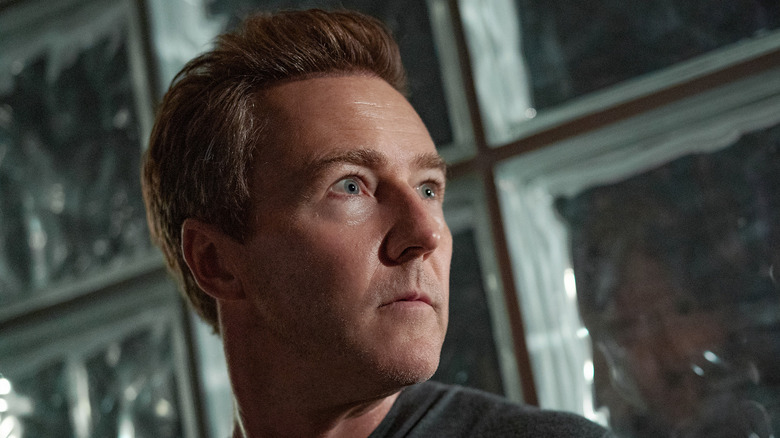
The most reassuring thing about "Glass Onion," Rian Johnson's superb follow-up to "Knives Out," is that it's subtitled "A Knives Out Mystery." Johnson's first Benoit Blanc film felt like lightning in a bottle, a non-IP movie with a big, star-studded cast that produced blockbuster box-office numbers. Even better, it was brilliant. Movies like "Knives Out" don't come around very often, although with "Glass Onion" vaulting over the lofty bar set by its predecessor, it sort of feels like they might.
In reality, a number of intimate murder mysteries have been released in the three years since "Knives Out" hit theaters. Some are classically lavish; others are quirky and comedic. Like "Knives Out," however, each one feels like a nod to Hollywood history, which is full of classic mystery films. Every one should satiate a viewer whose appetite has been whetted for tricky cases and singular detectives. So, while there are more "Knives Out" whodunits on the way (and an unrelated mystery TV series by Rian Johnson), here are 10 other mystery films you should see if you loved "Glass Onion."
Brick
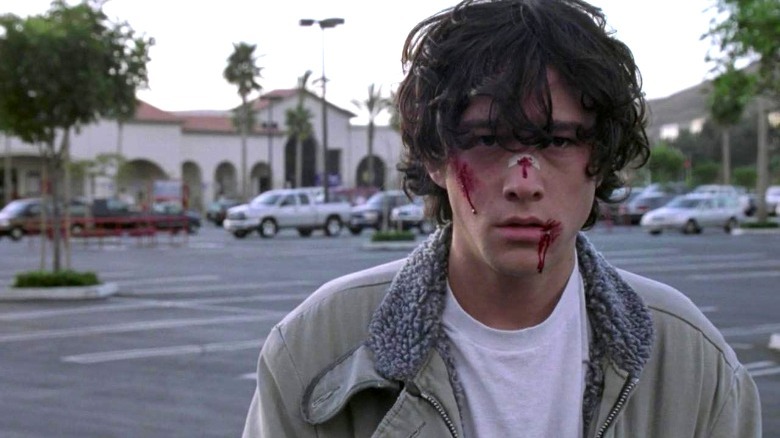
"Brick" is the original Rian Johnson whodunit. It's radically different from the Benoit Blanc adventures that followed it, and yet they're absolutely spiritually aligned. In all three films, detective work is a love language. Blanc and Brendan (Joseph Gordon-Levitt) love solving cases, even if they're both reluctant to admit it. Doing so plugs them into the best and worst of humanity. There's no other current of energy quite like that.
In "Brick," however, the language of classic noir movies is literally spoken by the film. "Brick" brings hard-boiled dialogue to an ordinary, modern high school and lets the tonal mishmash alchemize. Characters have code names like "The Pin" and toss off tough but poetic missives like, "Now we've shaken up the tree. Let's wait and see what falls on our heads." There's a genuine sense of peril to the crimes that unfold, and yet Johnson frequently finds ways to remind audiences that they're watching a bunch of high schoolers (the sudden appearance of a nefarious character's mom, for example.) "Brick" lacks the Hollywood sheen and elegance of the "Knives Out" films, but it shares the same restless creative spirit, and is a great opportunity to watch one of the great modern directors build his filmmaking muscles. "Glass Onion" fans should rush to see it, if they haven't yet.
See How They Run
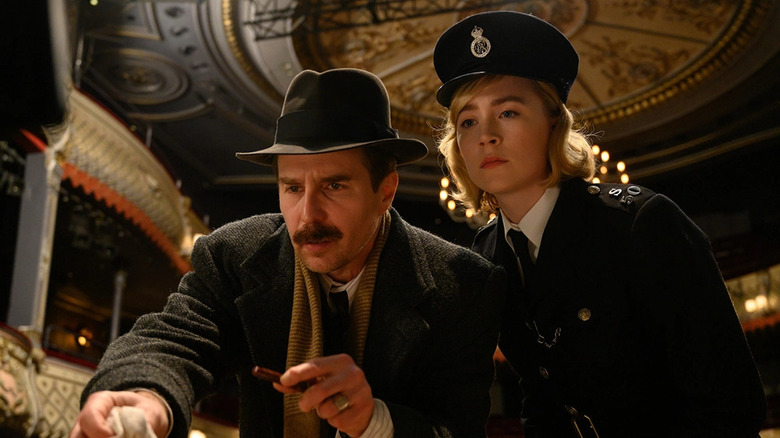
From its opening moments, "See How They Run" is gleefully in love with Agatha Christie's work, as well as the type of mysteries that made her famous. It opens at the original production of "The Mousetrap." Minutes later, the Hollywood director who's begrudgingly adapting it, Leo (Adrian Brody), is killed. "If you've seen one [whodunit], you've seen 'em all," Leo snarls in voiceover. But how is Leo narrating his own murder? Will "See How They Run" remain this meta, or will it settle into a standard period piece? The answers are all surprising.
That's what elevates Tom George's movie from an homage to a spiritual successor. "See How They Run" has its cake and eats it too — it's all too aware that murder mysteries were the comic book movies of their day, and it has its way with the Hollywood IP parade even as it's, technically, doing something brand new. Saorise Ronan's performance is a must-see for fans of Daniel Craig's Benoit Blanc, and the way the film shatters its cast's stiff upper lip is reminiscent of the holes that "Knives Out" and "Glass Onion" poke in American wealth and entitlement. Somehow, "See How They Run" is still slept on despite being readily available on HBO Max, and serves as a fine follow-up to both "Knives Out" and "Glass Onion."
Green For Danger
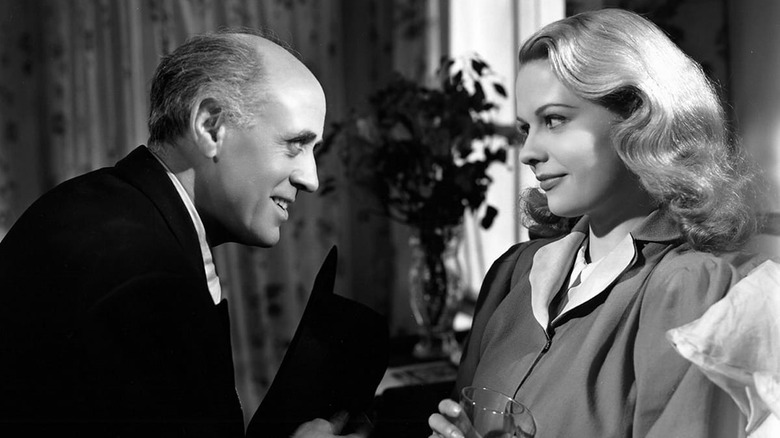
"Knives Out" is celebrated for its singular detective and twisty plot. The former reinvents Daniel Craig's onscreen persona, and the latter sets a new standard for third-act murder mystery revelations (one "Glass Onion" lives up to). That means that "Green for Danger" is one of the "Knives Out Mystery" series' eldest predecessors. A 1946 film directed with aplomb by Sidney Gillat, this classic marries an Agatha Christie-style whodunit to a wartime thriller, with one of the best onscreen detectives ever at its center.
On the off chance that you aren't familiar with acting legend Alister Sim, "Green for Danger" is a perfect introduction. His Inspector Cockrill is equal parts bumbling and beguiling, a sneakily smart detective with a Cheshire Cat grin and charm to spare. Benoit Blanc's roots can be seen as much in Cockrill as Miss Marple or Hercule Poirot. That makes the film a must-see for "Knives Out" fans.
But that's not all. "Green for Danger" also has a genuinely surprising third act, the sort that feels inevitable in retrospect but still plays like gangbusters. That's what makes "Knives Out" a delight on repeat viewings, and why "Green For Danger" should be seen at least once by everyone.
Lone Star
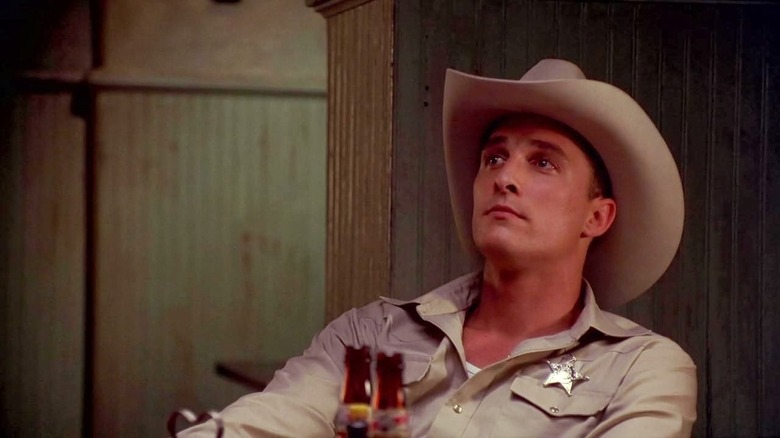
"Knives Out" was a decidedly Massachusetts affair, from wealthy socialites who brag that they saw "Hamilton" to an abundance of cozy sweaters. "Glass Onion" is a reflection and refraction of Greece's sun-soaked islands (to say more would spoil "Glass Onion.") John Sayles' 1996 masterpiece, "Lone Star," is cast from the same mold, maximizing the setting's thematic resonance by working overtime to be the most Texas movie ever made. It's more than the on-the-nose title. "Lone Star" takes a deep dive into the history of its Rio County setting, plumbing it not only for familial secrets and decades-old crimes, but also the generational experiences of those in power and the marginalized people of color. It loves Texas, and is equally quick to point out the poison in its roots. It's a film that both interrogates and celebrates.
What's more, "Lone Star" concerns itself with the weight of shared history. In "Knives Out," "Lone Star," and "Glass Onion" the ties that bind are heavy. Sometimes, they're forged by friendship. More often than not, they're familial. The constant is that, no matter what, they matter. This is what makes "Lone Star" a peer, not a contrast, to Rian Johnson's work, and one of many reasons it's a must-see for "Glass Onion" fans.
Primal Fear
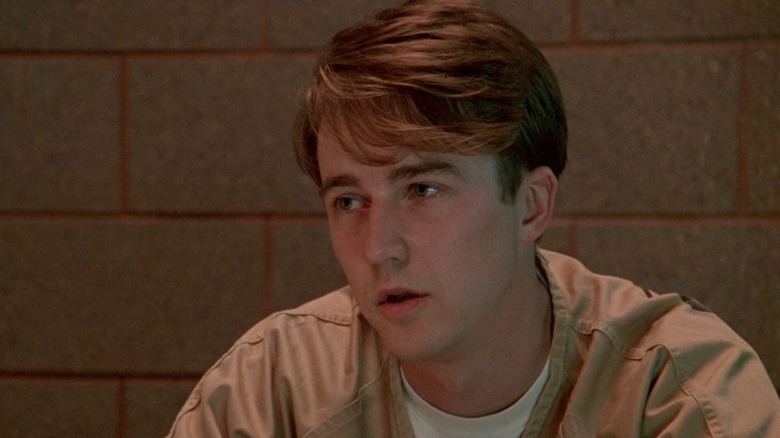
Part of what makes the "Knives Out" films feel miraculous are their impeccable ensemble casts. Rian Johnson and casting directors Mary Vernieu and Bret Howe understand that a mystery is only as good as its suspects, and the actors they choose fully deliver — and then some. Many give performances that expand their range: Chris "Captain America" Evans cements his sneering bad guy bona fides in "Knives Out," while Ana de Armas proves she can play a winning, layered ingénue. There's no need to spoil why Edward Norton's work in "Glass Onion" is on par with Evans' and de Armas', but suffice it to say that it's a contender for the actor's Mount Rushmore of screen roles.
Ironically enough, Norton's Academy Award-nominated performance as a different suspicious character is assuredly one of his top four efforts. As Aaron Stampler in Gregory Hoblit's "Primal Fear," Norton is the ultimate wild card. Hampered by a stutter and general docility, Stampler is initially the portrait of innocence. That's a major reason why Richard Here's Martin Vail takes his case. As the film progresses, though, the revelations about who Aaron actually is and what crimes have really been committed become more and more alarming.
Again, no spoilers here, but it's fair to say that "Primal Fear" set the tone for the entirety of Edward Norton's dramatic oeuvre. Norton thrives on unpredictability, and contains a live-wire energy that seems ready to break his slender frame upon release. He's also capable of a disarming vulnerability. In "Primal Fear," he wields both like weapons. It's a must-watch performance for anyone who enjoyed Norton in "Glass Onion," or who enjoys the series' twisty plots.
Clue
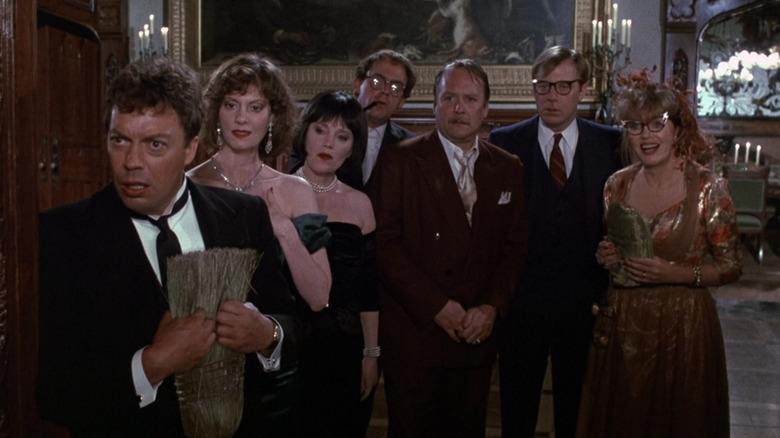
At their cores, "Knives Out" and "Glass Onion" are fiendishly comedic entertainments. The mysteries have genuinely high stakes, but the films are never distressing or disturbing. Few movies successfully walk that tightrope, but Jonathan Lynn's "Clue" is one of them.
Inspired by the famous Hasbro board game — and still the best movie based on a tabletop title — "Clue" is a comedic tour de force. It stacks punchlines like deli meats. Every time that you think the movie can't get richer, it does, from the late-breaking assassination of a singing telegram artist to its memorable endings (all three of them). Like "Glass Onion," it's genuinely surprising, and its cast couldn't be more qualified. There are moments in "Clue" when no less than Christopher Lloyd, Madeline Kahn, and Tim Curry go toe-to-toe, giving no stylistic quarter. There is zero doubt that this is cinema.
That's the other reason why "Clue" is a must-watch for "Glass Onion" fans. Both are closer to blockbuster films than art-house mysteries, yet each is so impeccably assembled that they feel like next-level moviemaking. I'd go so far as to say they are. Lynn and Johnson paint indelible portraits of humanity while doling out pulpy narratives that are anything but draining. They're the types of movies that make you wonder why there aren't a hundred more like them.
The Nice Guys
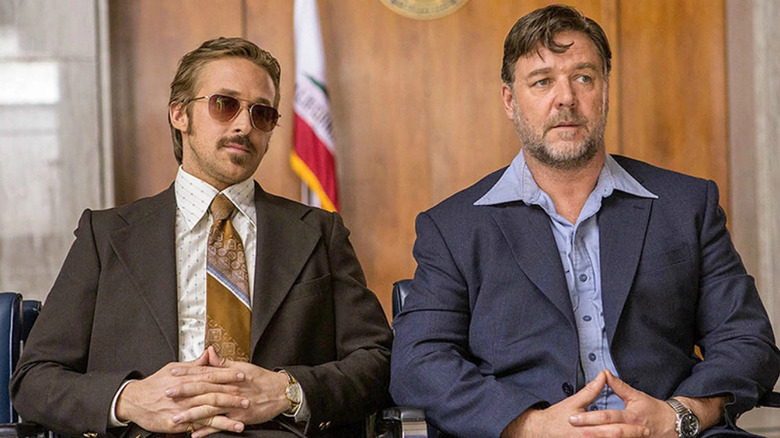
There are many contenders for the funniest performance of the century, but Ryan Gosling's turn as Holland March in "The Nice Guys" is absolutely in the running. As March, Gosling is Elliot Gould in "The Long Goodbye" by way of Looney Tunes. He's prone to both high-pitched screaming and deadpan line deliveries. March is believable as a detective, but he also seems barely competent. If scientists tried to create the ideal seriocomic character in a lab, even they would have trouble making Holland March. His brilliance feels intrinsically tied to Gosling and his work. Even better? The rest of "The Nice Guys" is on his level.
If you love Benoit Blanc in "Glass Onion," "The Nice Guys" gives you not one but two quirky detectives to root for. Neither is as polished as Benoit. Holland March is a mess. Jackson Healy (Russell Crowe) is a broken, blunt-force instrument. Writer-director Shane Black loves them both. He takes Healy and March on the long, punch-filled road to redemption, dragging them into a seedy case of mistaken identity, political corruption, and no shortage of screw-loose henchmen. "The Nice Guys" is more of a quest for the truth than a classic whodunit, but it hardly matters when the heroes are as endearing as the pair in question. It doesn't hurt that Black and "Glass Onion" writer-director Rian Johnson share an affinity for idiosyncratic dialogue, either. "The Nice Guys" is "Glass Onion" by way of an R rating and far more whiskey. It rules.
The Wolf Of Snow Hollow
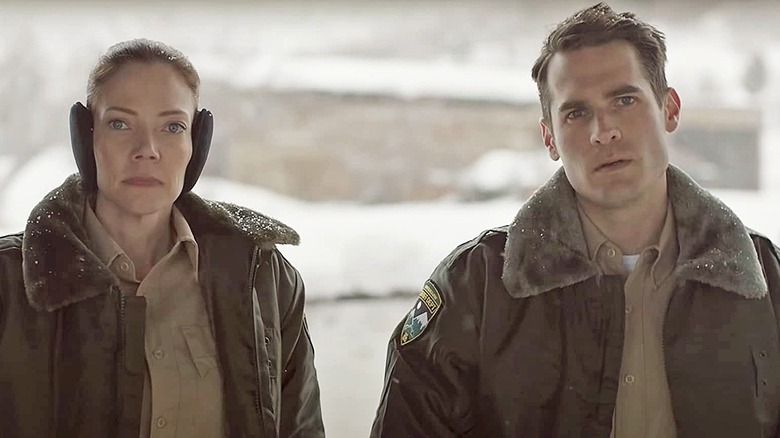
There's no clear victor in the unofficial contest for "most amusing 'Glass Onion' character." Dave Bautista's Duke Cody is near the head of the pack, as is returning detective Benoit Blanc. In "The Wolf of Snow Hallow," though, there is no competition. It's Jim Cummings' John Marshall, a blowhard police officer whose comedic verbal tirades mask a bruised insecurity and genuine do-gooder instincts. Marshall is a wondrous character not far removed from Cummings' breakout role, Officer Jim Arnaud in "Thunder Road," but the central plot of "The Wolf of Sleepy Hollow" is far more elaborate and "Glass Onion"-worthy.
On the surface, "The Wolf of Sleepy Hollow" is a horror-comedy. Marshall is tasked with investigating a series of gruesome killings in his normally sleepy town, each of which appears to be the act of a werewolf. As the film unfolds, however, it becomes clear that we're really watching a whodunit. That tonal shift puts "Wolf of Sleepy Hollow" closer to "Glass Onion" than unsuspecting fans might be prepared for, particularly given the latter's elaborate contraptions and sinister machinations. "The Wolf of Sleepy Hollow" and "Glass Onion" both probe modern myth-making for clues as to why humans scheme, lie, and kill. Both also contain genuinely moving subplots; this comedic werewolf thriller and the quirky murder mystery would make an excellent double feature on movie night. Watch them both as soon as possible.
Werewolves Within
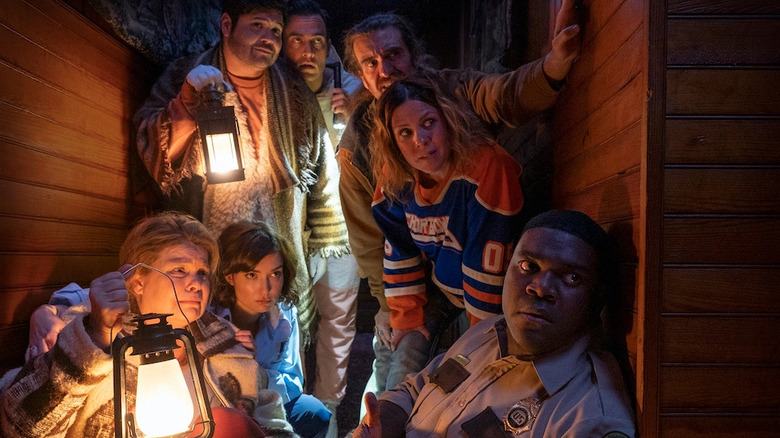
Your eyes don't deceive you: There's a second werewolf murder mystery on this list. That should be less surprising than it seems. Chamber murder mysteries like "Glass Onion" are, at their core, a search for a wolf hiding in sheep's clothing. The reveal of the killer is the equivalent of a werewolf transformation scene, albeit with far less fur. Along those lines, Josh Ruben's ecstatic "Werewolves Within" makes ample room for both police work and actual werewolves. It's also as funny (if not funnier) than "Glass Onion," which is saying something given how deliriously entertaining the second "Knives Out" mystery is.
Give all the credit in the world to director Josh Ruben and his talented ensemble (Sam Richardson, Milana Vayntrub, Harvey Guillen, and so many more) for the film's comic combustibility. At times, the wide-angle shots of five actors riffing feel closer to a stage play than a movie. Ruben, however, also has sharp filmmaking instincts. Sequences depicting suspicious break-ins, paranoia-inducing confrontations, and the final battle are all impeccably shot and edited. That Ruben blends the theatrical with the cinematic all while honoring the whodunit's history with both is a testament to how hard "Werewolves Within" rocks. If you enjoy Rian Johnson's mystery canon to any degree, you need to check it out.
Murder Mystery
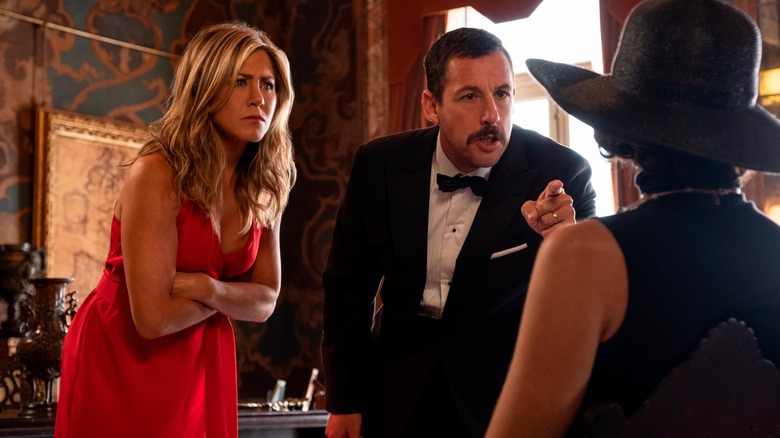
"Murder Mystery" is the slightest of the films listed here. At times, it barely feels like a movie. Netflix's lavish but loose Adam Sandler comedy pits the actor and Jennifer Aniston against a daffy collection of top-tier actors for a whodunit that reflexively smirks at itself.
Shockingly, while this sounds like a chore, it isn't. If you loved "Glass Onion," there are two things that make "Murder Mystery" worth your time. One: Sandler and Aniston have genuinely excellent comedic chemistry. If you ever needed proof that the two veteran A-listers are effortlessly good at what they do, "Murder Mystery" is it. It's hard for a comedy to feel both low-stakes and snappy, but their bickering does, and that's delightful. (Some credit, of course, must go to James Vanderbilt's script, which isn't on the level of his "Zodiac" or "Scream" screenplays but is still reliably punchy.)
Two: "Murder Mystery" leans into its Monaco location to a degree that does the Greece-set "Glass Onion" proud. There's some particularly solid stuff shot in and around the city's Grand Prix, and the decision to have Sandler and Aniston's Nick and Audrey Spitz play tourist as much as detective is a wise one. All gumshoes are strangers in strange lands. They wander into a foreign situation and must learn the language of each individual crime scene. At its best, "Murder Mystery" makes this literal. While it's a comedown from the highs of "Glass Onion," so is an IPA after a well-aged whiskey. But you know what? IPAs are also wonderful.
Read this next: The 14 Best Noir Movies Ranked
The post 10 Mystery Movies That Glass Onion: A Knives Out Mystery Fans Should Watch Next appeared first on /Film.
Windows 10 Users With Windows Subsystem For Linux Can Now Use GUI Apps
Read more of this story at Slashdot.
Chris Hemsworth Had An Extremely Tough Time Nailing Down His Character In Furiosa
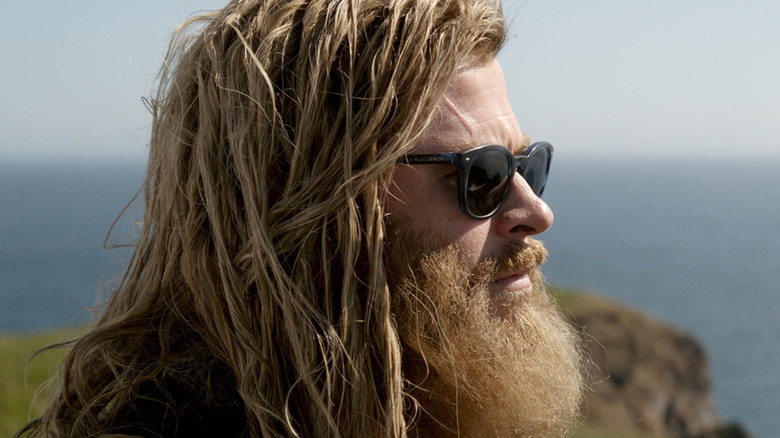
Most actors are no strangers to the idea of the characters they play undergoing some sort of identity crisis. Chris Hemsworth knows all about that, having portrayed the Marvel superhero Thor during his most drastic on-screen transformation yet: the "Dude"-inspired deadbeat from "Avengers: Endgame." But, on the other hand, every performer's worst nightmare rears its ugly head when they themselves can't quite get a handle on the intricacies of the individual they're meant to play. Panic time.
Hemsworth found himself in exactly that unenviable position in the years leading up to filming for "Furiosa," writer/director George Miller's long-awaited prequel film to "Mad Max: Fury Road." Initially described only as playing "totally against type" in the role of the film's primary antagonist, it's little surprise that the "Thor" actor would feel a little out of his element under the guidance of the convention-defying Miller (although Hemsworth did play another villain who was nothing but bad news in 2018's "Bad Times at the El Royale"). After all, both Tom Hardy and Charlize Theron expressed similar reservations throughout the grueling production of "Fury Road" -- largely resulting from the fact that Miller didn't provide his stars with an actual "script" in the traditional sense. Yep, that'll certainly do it.
Hemsworth didn't have that disadvantage on "Furiosa," however, benefitting from years of looking over the completed screenplay to properly get his head around his character rumored to be named Warlord Dementus. But to hear the actor tell it, this long wait period only made his anxieties even worse. In the process, he instantly confirmed himself as the winner of the "Most Relatable Chris" award that I've just made up. Three cheers, everybody!
'I Didn't Know Who This Character Was'
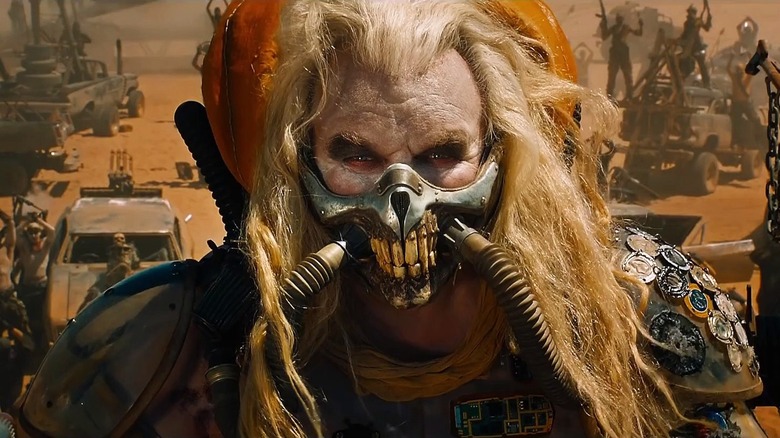
Some things never change, huh? Almost exactly a decade after filming on "Fury Road" resulted in one of the most infamously tough productions in all of modern Hollywood history, it seems as if at least one actor on "Furiosa" found himself in very similar waters. Chris Hemsworth has played gods, alien-hunting government agents, and a black market mercenary or two during his successful career ... but none quite compared to the difficulties of figuring out how to play a warlord in George Miller's "Mad Max" prequel.
While appearing as a guest on Josh Horowitz's "Happy/Sad/Confused" podcast (via Entertainment Weekly), Hemsworth opened up about how different this experience was from his usual process:
"Often I get a script and I know from the first read, the second read, I know who the character is and I get an instant, sort of, visceral feeling attached to it, like, 'Alright, I've got it.' This, I had read two years before I started shooting and was in awe of the script. It was the most beautiful thing I've read. I love George Miller — but I didn't know who this character was."
Little else in the business can induce a sinking feeling in a performer quite like this, to say the least. Luckily, Hemsworth managed to regain his footing once he, the cast, and Miller all settled into rehearsals. "We did about four weeks of rehearsals, and we started digging in and diving into it, and things started coming to me. And then, about two weeks prior to shooting, something clicked. I went, 'Ooh! Ooh. I think that's who it is. I think that's how he moves.'"
'I'm Gonna Derail One Of The Most Iconic Franchises'
See, even one of the most recognizable name-brand actors currently working in the industry can be plagued by feelings of panic and self-doubt. He's just like us! It's hard to imagine a worse feeling for Chris Hemsworth than watching the calendar tick closer and closer to the start of production, yet still struggle to grasp exactly what kind of character he's meant to portray.
The actor went on to detail just how much of a toll this stress took on him -- not just for a few weeks or months, but for two full years between receiving the script and the beginning of filming on "Furiosa:"
"But, in the buildup, and I'm talking a couple years, I was scared out of my mind. I'm like, 'I'm gonna derail one of the most iconic franchises.' I'm gonna bring down 'Mad Max.' It's gonna be my fault."
In many ways, this reaction feels incredibly reminiscent of Tom Hardy's reaction to being cast as Mad Max himself, taking over for star Mel Gibson (as detailed extensively in Kyle Buchanan's "Blood, Sweat & Chrome: The Wild and True Story of Mad Max: Fury Road" oral history novel). But while Hardy would then be subjected to a punishing shoot (though, admittedly, he didn't exactly help improve things, either), Hemsworth has nothing but glowing praise for his experience in the Australian desert with Miller, his crew, and the cast, fondly remembering it as "the best experience of my career" and "something I'm the most proud of, too."
"Furiosa" is slated to peel into theaters on May 24, 2024.
Read this next: The 14 Greatest Action Movies Of The 21st Century
The post Chris Hemsworth Had an Extremely Tough Time Nailing Down His Character in Furiosa appeared first on /Film.
Bad Santa Courted James Gandolfini, Bill Murray, And Jack Nicholson Before Landing Billy Bob Thornton
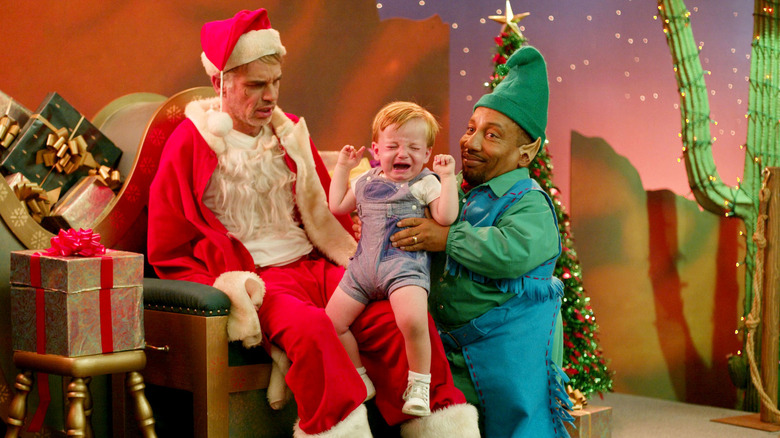
With the holiday season fast approaching, it's that time of year when movie journalists and film critics start wheeling out their lists of alternative and anti-Christmas classics. If ever there was a film tailor-made for such picks, it is "Bad Santa."
In the true spirit of seasonal generosity, screenwriters Glenn Ficarra and John Requa created a script gleefully intended to offer offense to all comers, and everyone involved looks like they're having plenty of fun working their way onto Santa's naughty list. Yet the key to the film's longevity is that it remains firmly on the side of clever-offensive; if it was simply another bland gross-out comedy, it probably wouldn't have become an instant cult classic that, despite its potty mouth and all-round vulgarity, still warms our cockles after repeat viewings.
As the instantly forgettable sequel proved, you can be crass, foul-mouthed, and gross, but to pull it off and still be genuinely funny and heartwarming requires a great script, a good director, and a terrific lead actor. "Bad Santa 2" only had the last one. The original had a deceptively literate screenplay that celebrated the musicality of inventive cussing, with director Terry Zwigoff once again showing the same natural empathy for loners and outsiders that he displayed in his previous film, "Ghost World."
Then, of course, you have the star, Billy Bob Thornton. "Sling Blade" may have put him on the map and "Armageddon" gave him significant exposure in a major Hollywood blockbuster, but "Bad Santa" is Thornton's defining performance to date. Thornton owns the role so completely that it is difficult to imagine anyone else in the part, although some big names were considered first.
So What Happens In Bad Santa Again?
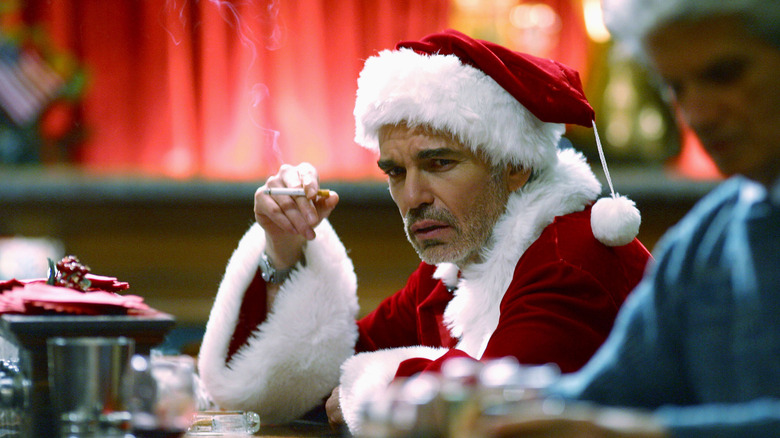
Willie T. Soke (Billy Bob Thornton) is an alcoholic, sex-obsessed safecracker whose life is terminally on the skids. He uses his seasonal gig as a department store Santa as cover so he and his partner-in-crime Marcus (Tony Cox) can rob the joint at night, but Willie is getting sloppy. He wants to quit, give up drinking, and open his own bar, but come the most wonderful time of year again, he's flat broke and agrees to one last job at a shopping mall in Phoenix, Arizona.
Willie's drunken and vulgar behavior instantly attracts the attention of the mall's awkward manager, Bob Chipeska (John Ritter), and his intense head of security, Gin (Bernie Mac), much to Marcus's anger and annoyance. Willie's life changes when he meets Thurman Murman (Brett Kelly), the bullied, neglected son of a jailbird embezzler, and Sue (Lauren Graham), a bartender with a Santa fetish. When the cops raid Willie's motel room he decides to move into Thurman's luxury house, where he lives with his senile granny.
Willie is surprised to find some murmurings of self-worth rekindled as he gets involved in Thurman's sad life. When the boy returns home with fresh bruises from the bullies and interrupts Willie's suicide attempt, the cynical criminal finds something worth living for as he teaches the kid some dirty tricks to defend himself. Sue even joins their home, forming a peculiar surrogate family with Willie, Thurman, and Granny.
As Willie heads out for the heist with Gin demanding a cut of the action and Marcus's murderously greedy wife Lois (Lauren Tom) also expecting her share of the loot, will he manage to crack the safe and make it home for Christmas?
James Gandolfini Was The First Pick For Bad Santa
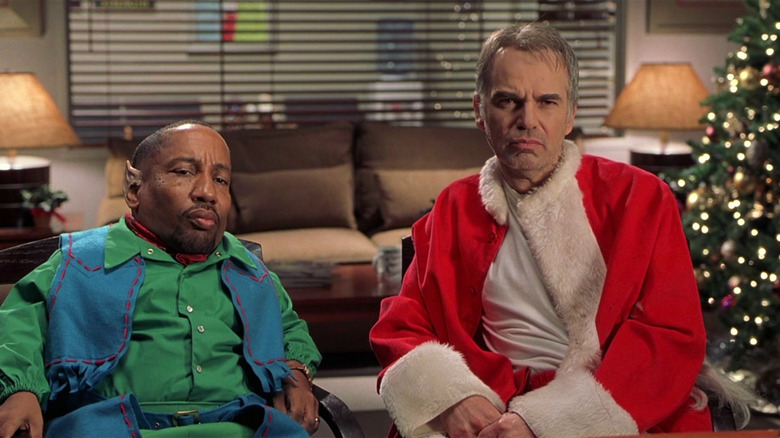
Alternative castings for any movie are always good fun, and it gets especially juicy when it comes to "Bad Santa." The Coen Brothers, acting as executive producers, wanted the screenplay specifically written with James Gandolfini in mind for the lead role. The actor was racking up awards for "The Sopranos" and worked previously with the Coens on "The Man Who Wasn't There," so Willie's dialogue was tailored to his speech rhythms.
Gandolfini fell through and the names just got bigger after that (via New York Times). Bill Murray was attached at one point, during a time when he was entering a new phase of his career as the elder statesman of indie comedy thanks to his terrific partnership with Wes Anderson. But then Murray stopped returning calls; maybe it had something to do with a little project with Sofia Coppola called "Lost in Translation."
I can imagine both actors bringing something very different to the role. As he showed playing Tony Soprano, Gandolfini could switch from charismatic to furious in the blink of an eye, and the mobster's rampant sex drive meant he could have handled Willie's frequent bonking quite easily. With his looming physique, however, he may have made the character too domineering to elicit our true sympathy.
Murray obviously has the comedy chops for the part, but I think he'd falter as Willie because he rarely plays anyone other than Bill Murray. Even when playing manic, angry, or depressed, there is always a sense of aloof self-awareness in his performances. I don't know if his carefully cultivated air of ironic detachment would allow him to immerse himself in the role the way Billy Bob Thornton does.
Some Oscar Winners Were Also Considered
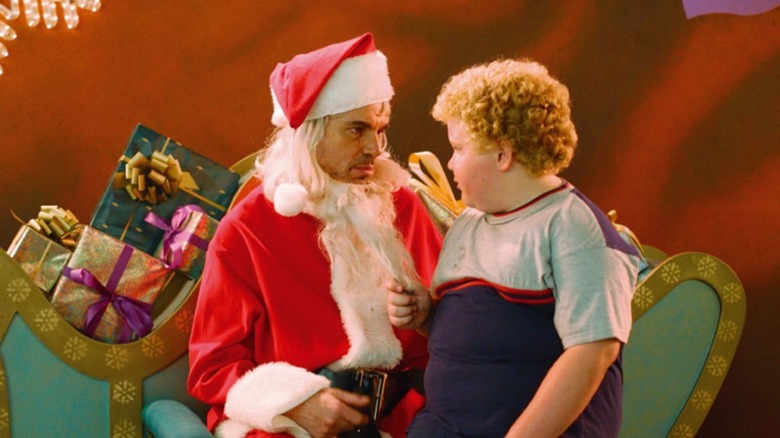
A whole bunch of Oscar-winning heavyweights were also considered for the role of Willie in "Bad Santa;" Robert De Niro, Jack Nicholson, Nicolas Cage, and Sean Penn were all mentioned in the casting process. How would they have worked out?
I think we dodged a bullet on both counts when it comes to De Niro and Nicholson. De Niro could definitely do dark comedy earlier in his career, as he showed with his brilliantly cringe-worthy performance in "The King of Comedy." Come the early 2000s, however, he was mugging for the audience in "Analyze This" and "Meet the Parents." We may have got an indication of how "Bad Santa" would have gone with him in the role when "Dirty Grandpa" stank out theaters in 2016.
As for Nicholson, he had been playing a caricature of himself since at least "The Witches of Eastwick," but at the turn of the new century he also gave the last two great (and remarkably restrained) performances of his career in "The Pledge" and "About Schmidt." Something tells me a Jack Nicholson "Bad Santa" would have been more like his cartoonish turn in "The Departed" than those two.
As for Nicolas Cage, anything is possible. He can do comedy and he can definitely do alcoholism, winning his only Oscar so far for "Leaving Las Vegas." He had yet to reach the full levels of zaniness that made him a cult hero, but he was certainly heading that way. Penn, on the other hand, is an intriguing possibility. He's not usually associated with comedy because he always seems so intensely self-serious, but his quirky performance in "This Must Be the Place" makes me think he could have done something really interesting with the role.
Why Billy Bob Thornton Is Perfect For Bad Santa
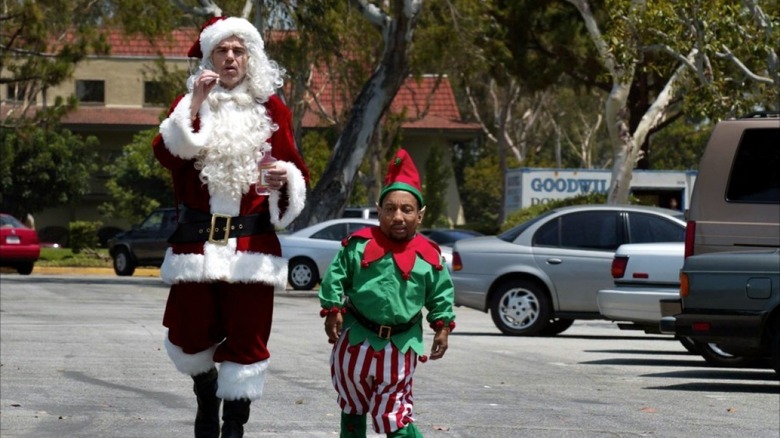
"Bad Santa" opens with Willie talking about his abusive father, a childhood trauma that Billy Bob Thornton shared with the character (via New York Post). Maybe this is why Thornton knew it was a film he had to make (via New York Times):
"My manager called and said: 'Wait until you read this script. I've never seen anything like this.' I'd read maybe a third of it, and I called him and said, 'We've gotta do this.' It was kind of a no-brainer."
Thornton's performance is amazingly ego-less; while some of the bigger names mentioned above may have overpowered the part with their well-defined screen personae, he quietly uses his significant abilities to serve the role. Thanks to that period in the spotlight from "Sling Blade" to his high-profile marriage to Angelina Jolie, it's easy to forget that for much of his lengthy career he has been a hard-working character actor, and as such he takes Willie completely seriously. He never winks at the audience and beneath all the uproarious boozing, sex, and vulgarity, there is a clear sense that he understands the safecracker's pain.
In a part that could have gone incredibly broad and big, Thornton imbues Willie with a deep feeling of world-weariness, an exhausted man fading out with only his self-loathing spiking into bursts of impotent fury. 20 years on, it increasingly looks like the role he will be remembered for. Willie may be a very bad Santa, but the sincerity of Thornton's performance makes him one that we want to share our Christmases with.
Read this next: The 10 Best Comedies Of The Last 10 Years
The post Bad Santa Courted James Gandolfini, Bill Murray, and Jack Nicholson Before Landing Billy Bob Thornton appeared first on /Film.
20 of the Weirdest Holiday Movies Ever Made
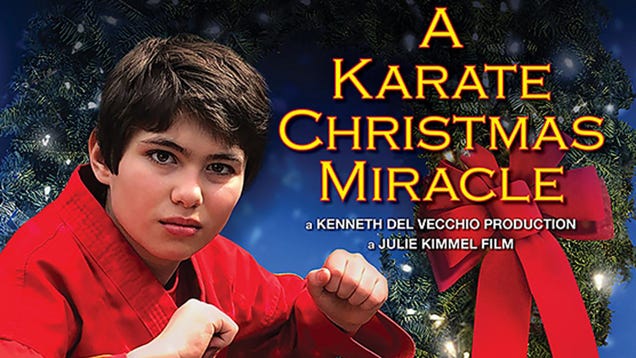
I confess I’ve only come into the holiday TV movie fold within the last few years, as the advent of the gay Christmas movie spurred me to explore other classics of the genre. What one immediately discovers, when delving into these worlds of small town values overcoming big city cynicism, is that a suspension of…
12 Movies That Only Die-Hard Martial Arts Fans Have Probably Seen
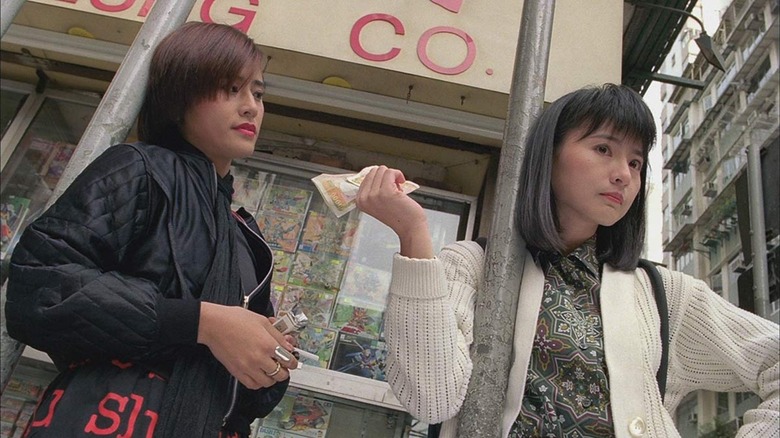
There's no singular definition of a martial arts movie. They can be deadly serious, endlessly silly, and sometimes even feature anthropomorphic turtles named after classic Italian artists. The common thread is the presence of fights that go beyond boxing or brawls in their style and form. Action cinema is filled with talents who've made a career showcasing those skills such as Bruce Lee, Jean-Claude Van Damme, Jackie Chan, and many more. You know them, you've seen them, and you love them, but for every well-known and celebrated film of theirs, there are four dozen more movies featuring equally great (or better) talents that don't get the same kind of love.
This brings us to this list of martial arts movies that only die-hard fans have probably seen. The number one reason why is straight-up unavailability. A precious few are "rediscovered" with new home video releases, but thousands more remain lost in the ether or only available on old DVDs and YouTube. Die-hard action fans will scour the Earth, but casual viewers will typically only see what's easily available. We've dabbled in underseen films before with a column called The Best Films You Haven't Seen, but this time the focus is on martial arts movies that have yet to find the audience they deserve. This list could be a hundred movies long, but we'll settle for 12 martial arts films that only die-hard fans have probably seen.
Sun Dragon (1979)
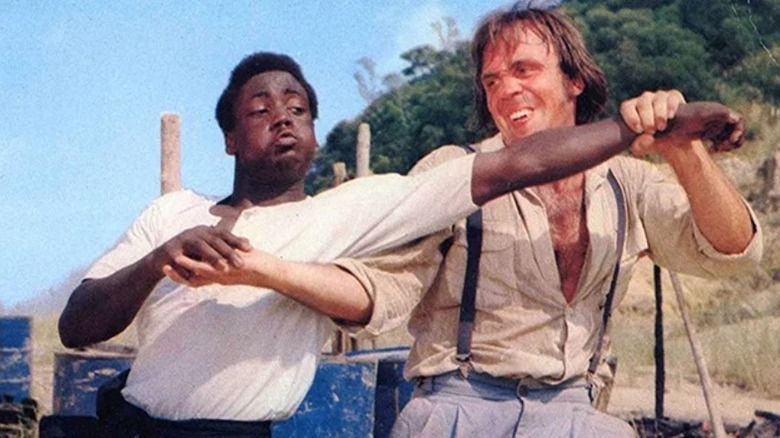
Two men seek revenge on the villains causing them grief beneath the baking sun of the Arizona desert. One is a young Black man whose entire family is killed by thieves, and the other is a good samaritan helping out his fellow natives of China in a foreign land. Those villains don't stand a chance.
Hua Shan's 21st feature leaves China behind to deliver the unexpected in a martial arts-fueled revenge picture set in the United States. It's a western in many ways, set in a nebulous time period that could be the late 19th century ... but also the baddies are all wearing muscle shirts? Hilariously bad dubbing via the American edit retitled "A Hard Way to Die" seems to be the only viewing option, which adds to the uncertainty, but what isn't in doubt is the action. Carl Scott is the main reason to watch as his presence in the genre as a truly talented Black martial artist given a starring role was a real rarity in the late '70s, and from the training montage on he's a force to be reckoned with. Billy Chong's fellow protagonist also delivers the goods thanks in part to clean choreography by Hsiao Sung Liang (who also plays Carl's sifu). Hua captures the action clearly with wide shots and smart edits ensuring that all of the fights work to make the film's detriments less weighty.
Tiger Over Wall (1980)
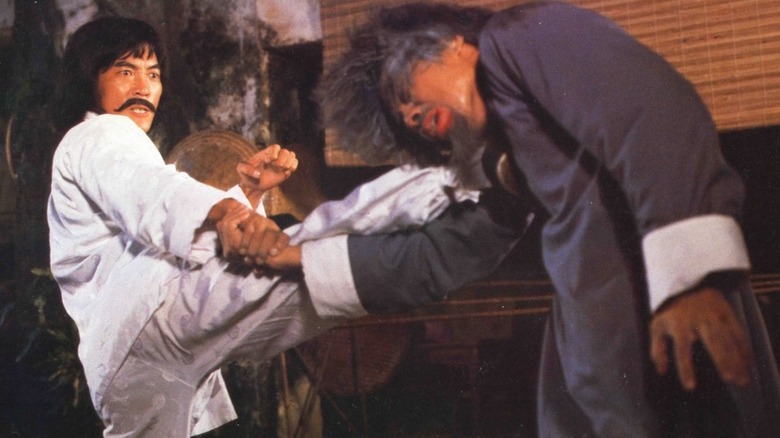
Shanghai in the early 20th century is a place of dueling powers and wavering honor. While a corrupt police captain sides with British oppressors, a young man and his family choose instead to stand up for what's right. Carnage ensues.
Chinese genre films often feature the Brits and their supporters as villains, and honor is pretty much a required ingredient in martial arts cinema. What earns praise in Tony Lou Chun-ku's 1980 film is the way the film sets up its protagonist and antagonist as supporting players in an ensemble about corruption, clashes of loyalty, and the mystery of a missing dog before blowing it all out with an epic third-act explosion of fight action. Hwang Jang Lee is a morally bankrupt and vicious policeman, and Phillip Ko is the young man who stands up to him. Bodies fall around them, but the two go at it for an extended period with a fight that moves through various weapons and styles before one emerges victorious. It's a violent, mean-spirited ride choreographed by Tang Tak Cheung to move the men from one technique and form to the next. We also get some bloody kills (and one wickedly twisty demise) adding thrills to an ultimately triumphant and true storyline.
We're Going To Eat You (1980)
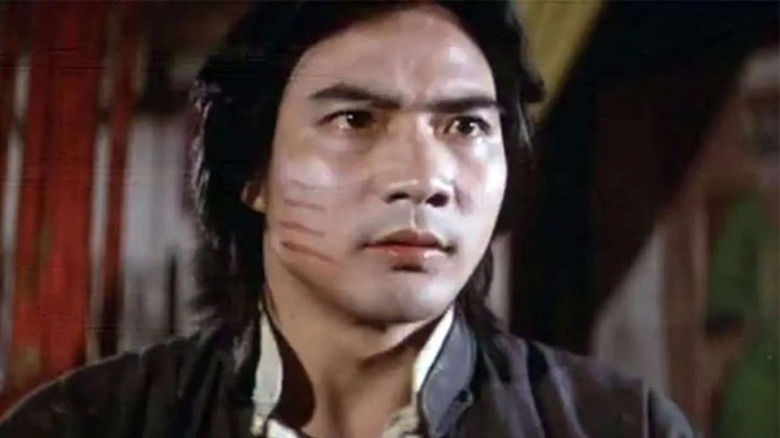
A policeman heads to a small island in pursuit of a thief, but he finds something far more dangerous. It seems this island community has a taste for human flesh.
Director Tsui Hark's filmography is filled with action classics that have made him a top name in the genre including "Once Upon a Time in China" and "The Blade." Fans who dig deeper and earlier are rewarded with unforgettable genre mashups. Released the same year as his nihilistic gem "Dangerous Encounters of the First Kind," "We're Going to Eat You" is a horror-comedy that succeeds on both fronts while also injecting plenty of fight action throughout. It's easy to mistake it for silliness given the title and broad comedy within, but the horror delivers some bloody and gory beats. To the point of its inclusion here, martial arts fans know that it delivers with the fights too. Our hero may be self-conscious about his body (a running gag), but there's no doubt his action chops and dexterity are unassailable. He faces off against masked blade-wielding cannibals several times, and their kinetic/acrobatic sequences suggest Hark had his priorities in place from the very beginning.
The Champions (1983)
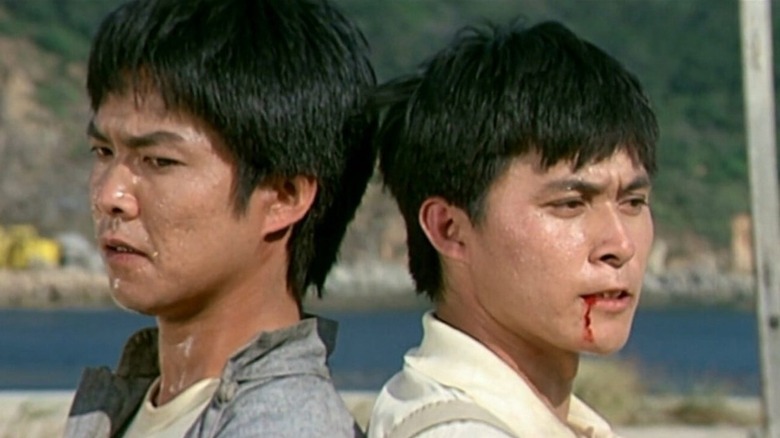
A country bumpkin on the lam finds new friends in the big city, but it's the game of soccer that catches his heart and mind the most. Can a talented but naive young man navigate the rough and tumble world of professional sports?
Yuen Biao plays the bumpkin, and that alone is already enough reason to watch this action-comedy from the early '80s. What makes this one extra special is the way Biao and writer/director Brandy Yuen Jan-yeung are able to blend martial arts into an otherwise traditional sports framework. Skills Yuen's character used while collecting goose eggs in the country serve him well on the field, and soon his fancy footwork is wowing fans, players, and team owners alike. Rivalry and corruption rear their ugly heads leading to a make-or-break game, and it's goofy while still being cheerworthy. Yuen often felt as if he worked in the shadow of Jackie Chan and Sammo Hung, but he was every bit their equal (they were superior when it came to pure athleticism). It may be little seen by today's audiences, but Yuen's film walked (and tangoed in one delightful scene) so Stephen Chow and "Shaolin Soccer" could run.
Magic Crystal (1986)
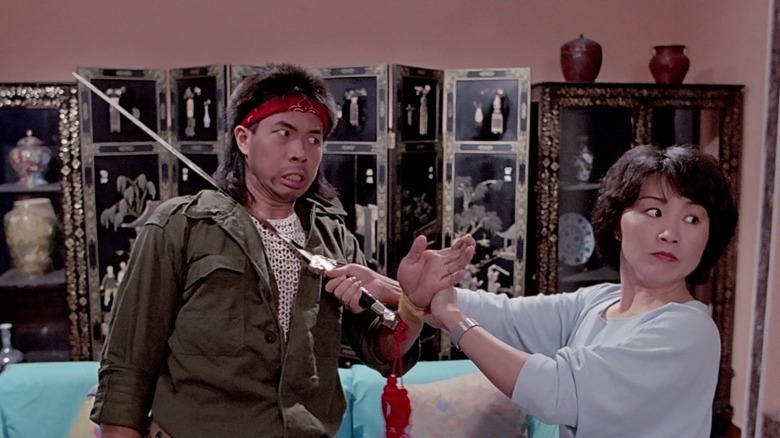
A mysterious green rock found in Greece becomes the target of various international agents, but it finds a home with a young boy named Pin Pin ... then it starts talking to him.
Released the same year as Lam Nai-choi's even more bonkers action/fantasy mashup "The Seventh Curse," director Wong Jing's lesser-known adventure stakes its own ground as a silly but exciting riff on "E.T. the Extra-Terrestrial." The alien here is a rock with a phallic arm (?) who needs the boy's help getting back to his spaceship. The effects are enough to convince one that the budget is low, but a chunk of the film unfolds amid sun-drenched Greek ruins so it looks good all the same. It's a family film of sorts, filled with wall-to-wall fights and the occasional bit of sexual harassment. Look past the family fantasy label and it's all about the action, with the likes of Andy Lau, Cynthia Rothrock, Phillip Ko, and Richard Norton. Rothrock and Norton are the most entertaining combatants, but everyone gets a piece of the action here. One sequence even lets Huang Wei-wei shine as she fends off numerous home invaders. Pair it with "Mac and Me" for a weirdly fun time.
Mirage (1987)
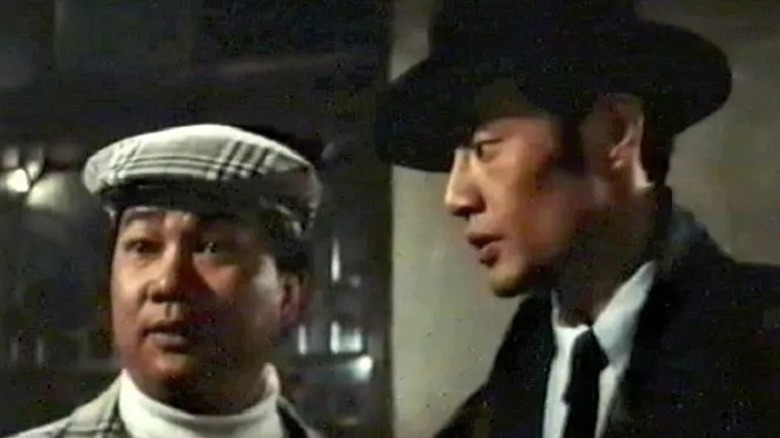
A photographer in 1930s China sees a mirage in the desert sky, and he decides to see where it leads him. The answer is a lot more exciting than he was probably expecting.
Fans of big, boisterous westerns like Kim Jee-woon's "The Good the Bad the Weird" owe it to themselves to seek out this epic, action-filled adventure. Director Tsui Siu-ming, who also co-stars and performs many of the film's biggest stunts, kicks off his wild tale with a bang. A big action scene involving hundreds of extras opens the film with gunfire, explosions, and numerous hand-to-hand fights erupting throughout. Our hero and his sidekick jump from one scrap to the next and face their biggest hurdle in the form of a female bandit leader more than capable of dishing out the pain herself. It's the scale of it all that makes Mirage a must-see, as chase scenes, battles, and more fill the screen on a journey through Mongolia. The personalities are big, but the stunts are bigger (and wildly dangerous), up to and including a mesmerizing gag featuring a motorcycle and a man engulfed in flames attempting to ride it. This is awe-inspiring stuff.
Iron Angels 3 (1989)
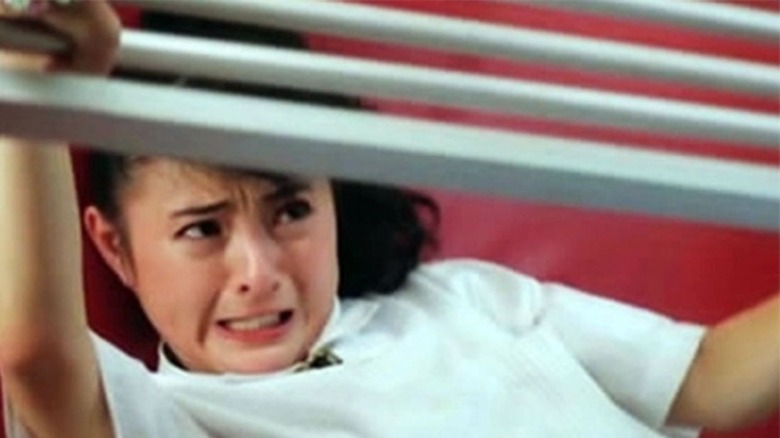
Terrorists are attacking high-ranking politicians, and a religious cult is behind the carnage. The only thing standing in their way is the secret agents known as "angels."
Director Teresa Woo's "Iron Angels" trilogy may not get the respect or attention of other similar series ("In the Line of Duty," "The Inspector Wears Skirts"), but the films are still very much worth the time of action fans. The first entry remains the best, and audiences seem to have decided that this one is the worst, but we're here to disagree. Moon Lee is a powerhouse of a performer, and her tiny frame exudes confidence with the skills to back it up. It's understandably disappointing that she's relegated to a supporting role, especially as that leaves Alex Fong taking the lead ... He's charismatic and a solid fighter, but he's no angel! The dedicated fans who make it through all three films are in for a treat. Lee's presence may be brief, but one of the best fight scenes of her career unfolds here as she takes on dozens of baddies in the hallways of a large mansion. Double use is minimal, so it's pure Lee delivering lightning-quick kicks and deadly glares. Worth the price of admission!
The Holy Virgin Versus The Evil Dead (1991)
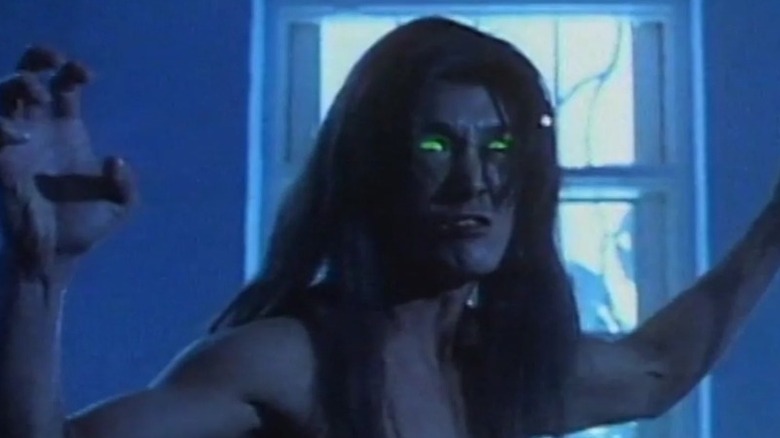
When a high-kicking human monster with a thirst for blood starts slaughtering nubile young women, the police initially come to suspect a nerdy college professor. As you do.
Donnie Yen is a big name in Hong Kong action cinema, but he didn't really come into his own until the early 2000s. Before then he gave supporting roles in movies both great and forgettable, and 1991's wonderfully named "The Holy Virgin Versus the Evil Dead" sits somewhere in between. He plays the geeky teacher forced into blistering action when Ken Lo's rapacious Moon Monster demon starts tearing through his students' clothes and flesh. Both talents are always worth watching, and here their physical skills are employed for a salacious adventure filled with bloody bits, plentiful action, and a surprising amount of skin. It's possible that the excessive nudity and grimly supernatural shenanigans have served to distract some viewers while distancing others, but neither can hide the film's abundant — and high-quality — action. Yen is in his youthful prime, and Lo is just two years away from his epic showdown with Jackie Chan in "The Legend of Drunken Master." It's B-movie antics with A+ action.
Kick Boxer's Tears (1992)
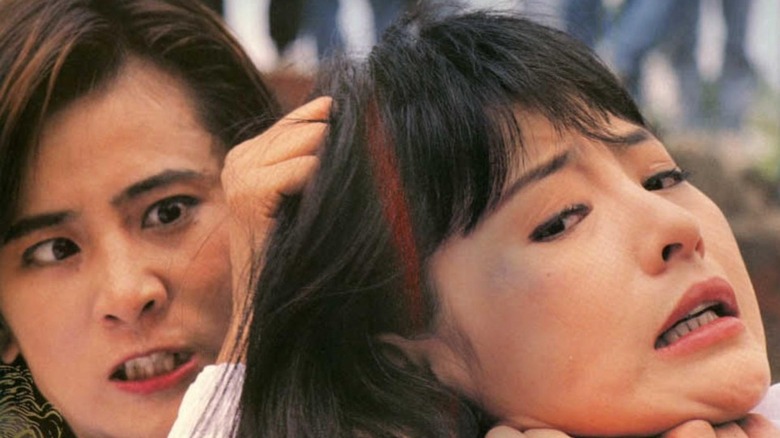
A kickboxer is killed during a fixed match, and his sister vows revenge. Little does she know that her checklist is going to run several corpses deep.
We know what you're thinking. Another Moon Lee film?! (She's also in "The Champions" above...) To that, we say simply that you're lucky because we could have easily made this entire list a Moon Lee love fest. Shen Da-wei's 1992 feature (his sole directorial effort) makes the cut not only because it puts Lee front and center, but because it tasks her dramatic chops as well as her action ability ... and she delivers. It's far less flashy than others in the so-called "girls with guns" subgenre and is often ignored because of it, but fans know it moves beyond the sports drama to deliver on the action front in a big way. Lee faces off against numerous male opponents, from a champion kickboxer to henchmen to the big boss himself. The heart of it sees Lee fight the great Yukari Oshima, and the two frequent co-stars never fail to bring the goods. They shared the screen five times in 1992 alone! Don't let the title and sports angle scare you off, as the third act gets nasty.
21 Red List (1994)
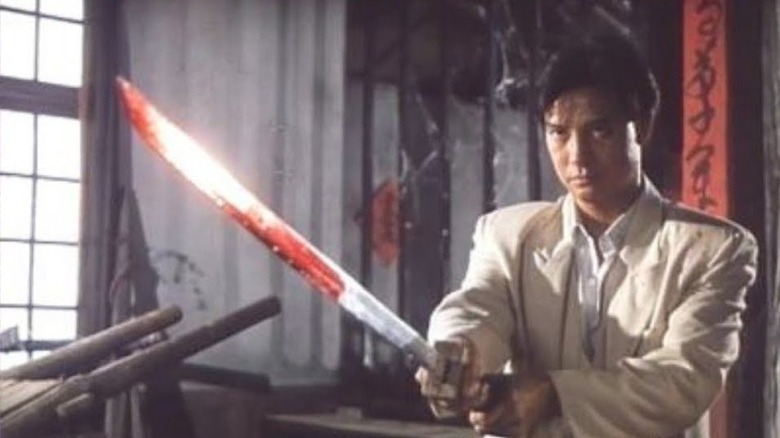
It's the early 20th century, and a secret treaty has been signed giving Japan dominance over China. A small band of Chinese rapscallions — adopted siblings trained in the arts of both fighting and theft — are tasked with finding the document before it can go into effect.
Director Chuang Yan-chien released two Taiwanese films in 1994 (this and the fancifully titled "Revanchist"), and both are bangers unfairly relegated to shoddy import DVDs and bootleg streamers. "21 Red List" is the more action-heavy of the two, and in addition to being plentiful in its fights and large set pieces, it's also wildly creative in its choreography. Things start small, but it breaks free from the genre mold by building to more elaborately staged clashes featuring swords, bamboo poles, strategically placed ropes, and severely outnumbered heroes. Chuang and choreographer Alexander Lo-rei also employ wirework to fantastically entertaining effect as fighters spin through the air and are sent flying through walls, poles, floors, and more. The political angle grows increasingly dramatic, but the blistering action continues until the very end with a fantastic dual duel as two pairs of combatants (including two equally capable women) fight to the death before everything goes up in flames.
Redbelt (2008)
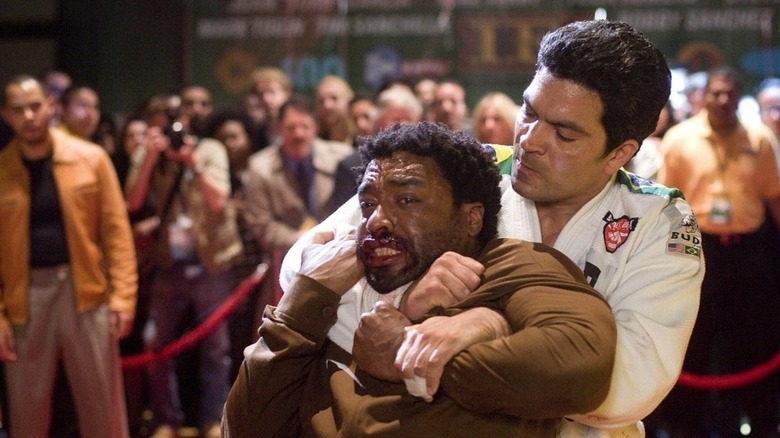
A martial arts instructor in Los Angeles sees his bad luck turning around after a series of unrelated events. The other shoe drops, though, and soon he's forced to practice what he preaches outside of the ring.
This is admittedly something of a cheat as "Redbelt" had a theatrical release and is pretty widely available via streaming. It still hasn't been seen by nearly enough people and, more importantly, it's not often you get the chance to include David Mamet on an action movie list. The action is good and understated as it often unfolds quickly and efficiently rather than be turned into a big set piece. The only real exception is a terrifically gritty and methodical end fight. Mamet's film might not constitute an action movie to some, but he crafts it with an interest in — and appreciation of — the sincerity of martial arts practitioners. Honor is a part of most action films, but here it flows through the film's veins in the form of Chiwetel Ejiofor's lead performance. His respect for jujitsu puts him at odds with competition for profit, and the character's journey to staying true to that belief is a fascinating one. Die-hard martial artists watch the film for that aspect, and the rest of you should too in addition to enjoying a typically strong Mamet cast including Alice Braga, Emily Mortimer, Ricky Jay, Max Martini, Jake Johnson, Tim Allen, and more.
Plan B (2016)
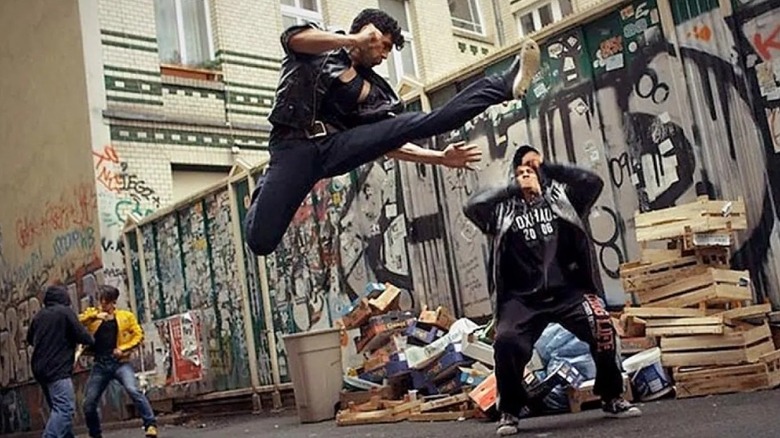
Three friends hoping to make their mark as stuntmen in the movie business stumble into action that has far more dangerous consequences. What they think is an audition is actually a hostage situation.
Just as you don't expect an understated action drama from David Mamet, you probably don't expect a brilliantly executed action-comedy from Germany either ... but here we are. "Plan B" features a lead trio of real-life stuntmen — Can Aydin, Yoon Cha-lee, and Phong Giang — whose filmographies include big franchises like "John Wick," "The Matrix," and more. All three are also naturally charismatic actors who show off solid comic chops and exceptional martial arts skills here. Its low budget means most of the fights unfold in familiar locales like warehouses, but you'll be having far too much fun to care. This is an action-comedy where both halves succeed beautifully as big laughs and thrilling fights keep the energy high and the blood flowing. Villain cameos from the likes of Heidi Moneymaker and Mike Moller add to the fun of a movie about stunt performers. It's telling that die-hard martial arts fans continue to seek out viewings of this recent film despite the lack of a North American release.
Read this next: Jackie Chan's 15 Greatest Fight Scenes Ranked
The post 12 Movies That Only Die-Hard Martial Arts Fans Have Probably Seen appeared first on /Film.
How One Of Glass Onion's Biggest Themes Directly Connects It To Columbo
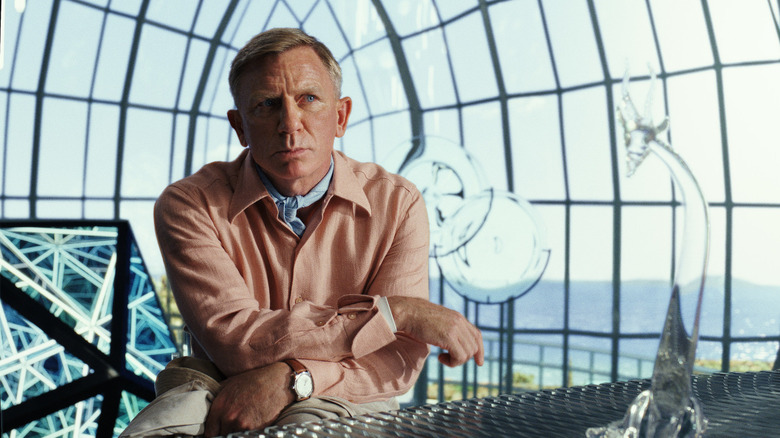
Spoilers ahead for both "Knives Out" and "Glass Onion."
The idea of "true disruption" runs rampant through the new Netflix film "Glass Onion." True disruption, we're told by a very confident billionaire living it up on his private island, comes in many forms. It can come in the form of a viral influencer who pushes questionable medical remedies. It can come in the form of a politician bucking norms regarding worldwide climate change. And it can come in the form of pushing out new energy sources supposedly intended for the benefit of mankind but primarily for the benefit of investors and stakeholders.
Anyone familiar with the work of writer/director Rian Johnson will be unsurprised to know that "Glass Onion," much like its 2019 predecessor "Knives Out," is a force of disruption itself, gleefully upending its own rules by fooling both the audience and many of its characters with information placed in plain sight but obfuscated with deliberate point and purpose. "Glass Onion" is a force for disruption because its one shared aspect with "Knives Out" is an actual, living embodiment of disruption theory: the Southern gentleman-detective Benoit Blanc. Blanc is a shrewd investigator of the truth, as we already know. What "Glass Onion" further proves is how Johnson takes inspiration in the creation of Benoit Blanc from one of the finest screen detectives, in his skepticism and distaste for how the rich live and treat others: Lt. Columbo of the Los Angeles Police Department.
Two Unlikely Sleuths
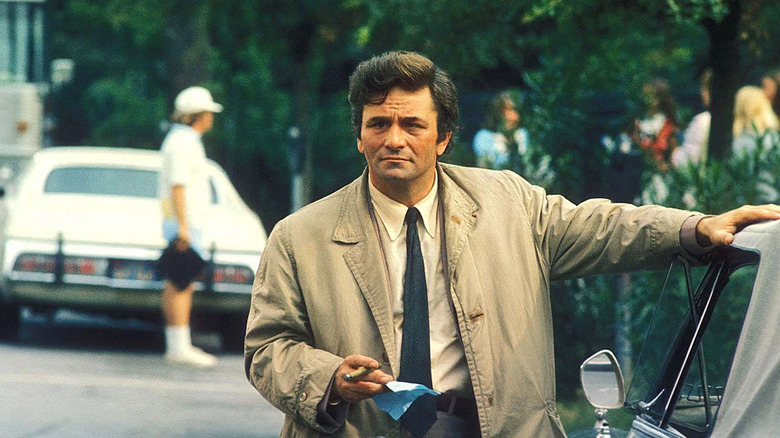
The '70s-era detective portrayed by Peter Falk on television would seem in many ways to be the antithesis of Benoit Blanc (Daniel Craig). Columbo, unlike Blanc, is an actual cop, while Blanc makes a strong point of saying his jurisdiction ends with informing the police of his findings. Columbo's entire being is the dictionary definition of "rumpled," while Blanc is always dressed to the nines (a bit more so in "Glass Onion"). And the joy of watching Columbo work is that we know the answer to whodunnit in any given episode before the detective himself does, because of how the show was structured. "Knives Out," in its own playful storytelling setup, somewhat answered the question of who killed prolific author Harlan Thrombey (Christopher Plummer) by revealing how much more his nurse and caretaker Marta (Ana de Armas) knew of Harlan's death than she initially let on. But even "Knives Out" had more twists and turns, beyond the initial implication that Marta inadvertently gave Harlan an overdose of morphine, as we eventually learn that his slacker grandson (Chris Evans) had engineered the entire plot.
"Glass Onion" doesn't go back to the same well twice, nor does it ape the structure of an episode of "Columbo." It takes a full hour before a character is murdered, and longer for anyone on screen or watching to be informed of whodunnit. In the early days of the pandemic, a group of so-called disrupters – Connecticut governor Claire Debella (Kathryn Hahn), men's rights advocate Duke Cody (Dave Bautista), celeb fashionista Birdie Jay (Kate Hudson), and scientist Lionel Toussaint (Leslie Odom, Jr.) – all separately receive a puzzle-box invitation from their mutual friend, billionaire Elo-–er, sorry, Miles Bron (Edward Norton). (Even recent news regarding a certain bird-named social-media site would not allow the connections between Miles and the billionaire owner of that bird-named site to be missed.) Miles is inviting them for an annual get-together at his island in Greece, so they can "solve" his murder as an elaborate party game. Once there, the group is surprised to see two additional parties: first, Miles' ex-business partner Andi (Janelle Monae), whose work at his company Alpha ended acrimoniously in court. And second, of course, is Benoit Blanc.
Disrupters Have Assembled
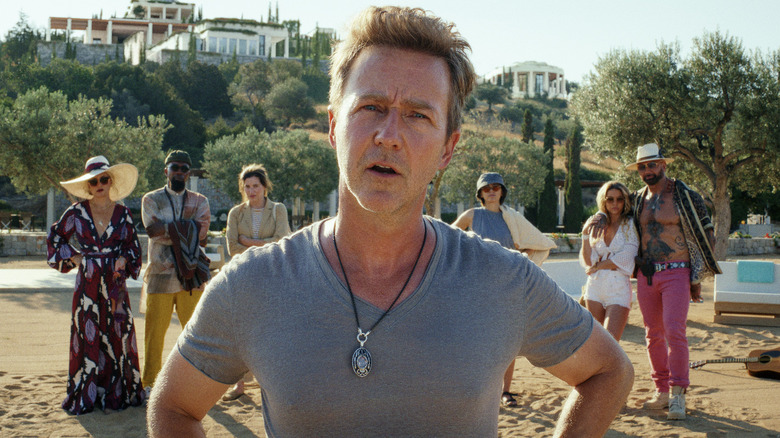
Miles, it turns out, is just as surprised to see Benoit as everyone else is – though our detective claims he received the same elaborate puzzle box, Miles didn't send it and doesn't know who could have done so. But Benoit fits in with Miles' overall vibe, since the detective's exploits are now so well-known that he's raking up the celebrity friends, as glimpsed in an early scene where he plays "Among Us" with Natasha Lyonne, Kareem Abdul-Jabbar, Stephen Sondheim, and Angela Lansbury. (The latter two, who have since passed away, receive dedications at the end. It's a fitting tribute to their mutual connections to the world of mysteries; Sondheim co-wrote the 1973 mystery "The Last of Sheila," and...well, Angela Lansbury will always be Jessica Fletcher, a Columbo-like figure in her own right.) And Miles loves nothing more than a good A-Lister crashing his party, much as he claims to have his whole aura defined by disruption.
Though Benoit looks snazzy, and his reputation precedes him, he is a modernized version of Lt. Columbo. Many episodes of "Columbo" (streaming on Peacock) are all very much about how Columbo comes in conflict with the murdering rich. In "Etude in Black," a second-season installment, he runs up against an arrogant, world-renowned conductor (Falk's longtime friend and collaborator John Cassavetes), at one point interrogating him at the Hollywood Bowl, while being dwarfed by its massive size. That season's finale, "Double Shock," involved Columbo facing off against twin brothers (both played by Martin Landau), one of them a celebrity chef and both of them involved in a murder. The list goes on and on – even the proper series premiere, directed by a young Steven Spielberg, depicts Columbo solving the death of one famous crime writer at the hands of his writing partner. So often, two things are true: Columbo catches a very rich person in the act of cold-blooded murder, and he uses his own perceived lower social standing to disarm the murderer and gradually get them to crack their façade.
As noted, Benoit Blanc looks like he fits in with the eclectic crew of disrupters in "Glass Onion." But he pulls his own version of a Columbo, open-mouthed in awe at Miles Bron's opulent island and the eponymous glass structure at its center, which houses a slick blue Porsche ("because there's nowhere to drive it on the island"). And while Blanc's seeming humility in the face of such expense may be partially genuine, it's there to have the characters let their guard down. (Benoit later dubs it "Southern hokum.") One of the film's great comic moments comes right after Miles reveals the centerpiece of the weekend: a three-day mystery in which the other characters are given clues and meant to figure out who "killed" him. "What do we win?" Benoit asks innocently, to a man who's seemingly won everything and is surrounded by a lot of other people who have also seemingly won everything. When Benoit tries to explain that the concept of the game implied a prize for the winner, he names the iPad as an example of a potential prize. "...Sure, you can have an iPad," Miles offers blankly. And then, about a minute later, Benoit explains the entire mystery without Miles having offered a single clue. Instead of Miles or the others being impressed, they're mostly baffled. (Miles is annoyed, because he paid "Gone Girl" author Gillian Flynn to write up the scenario, "and she's frickin' expensive.")
The True Endgame
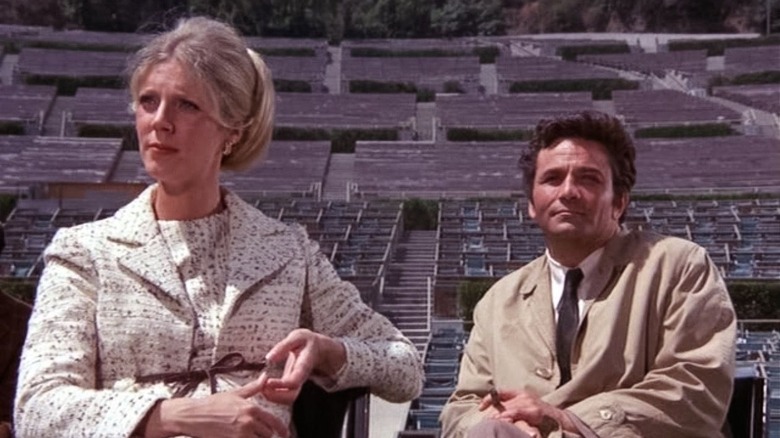
Early on in the run of "Columbo," it's not always evident how much of the detective's reactions to the way the other half lives in the Los Angeles area – from their high-roofed abodes to various opulent works of art hanging nonchalantly – is genuine and how much is a ploy. The same is true of Benoit Blanc, especially when he's confronted with the "Mona Lisa," the genuine article on loan from the Louvre because France needs money to stay afloat in the pandemic. Though Blanc may seem genuflect, he is – of course – hiding something. Halfway through the picture, two major deaths seemingly occur: first, Duke is poisoned, and second, during a power outage that's part of the mystery game, Andi is shot by a hidden assailant. The latter death seems to hit Benoit hard, as he gets visibly emotional at her unexpected murder.
This is where Johnson gets to reveal the true endgame: Andi is dead...but she's been dead for a week. A moment early on – in which Blanc's boyfriend (Hugh Grant) mentions to Benoit that there's a big box at the door for him – is shown now in full. Blanc is visited not just by the puzzle box itself, but by the delivery person: Andi's twin sister Helen, an Alabama schoolteacher reeling from her sister's apparent suicide only two days earlier. Helen is convinced that Andi was murdered specifically because she had proof that she was going to use to destroy Miles, for having stolen her idea and becoming rich off it, and was dangling that proof in front of the other disrupters to see if they'd come clean. And so Blanc, who has already admitted to being so stir-crazy that he needs a case, agrees to go to Miles' island, but only if Helen joins him, pretending to be Andi.
Aside from filling in a number of curious early moments with valuable context – like one shot where "Andi" is seen stumbling to her room that's clarified as her being drunk by having too many of Jared Leto's hard kombuchas – this surprise team-up between Blanc and Helen is further proof of the argument against the rich being espoused throughout "Glass Onion." (The twist regarding Andi and Helen is also a nice nod, if perhaps intentional, to that aforementioned "Columbo" episode where the detective faced off against twin murderers.) The hard-working but not well-off Helen notes that when she and Andi were young, they would put on airs and do a silly voice meant to evoke the upper crust, which they dubbed "Rich B*tch." Though Helen is hard-pressed to square that same sister with the woman who ended up working alongside Miles Bron, she wants to get to the bottom of what happened to Andi, and is all too happy to push back against Miles' so-called friends, whom she correctly dubs "sh*theads."
Just One More Thing
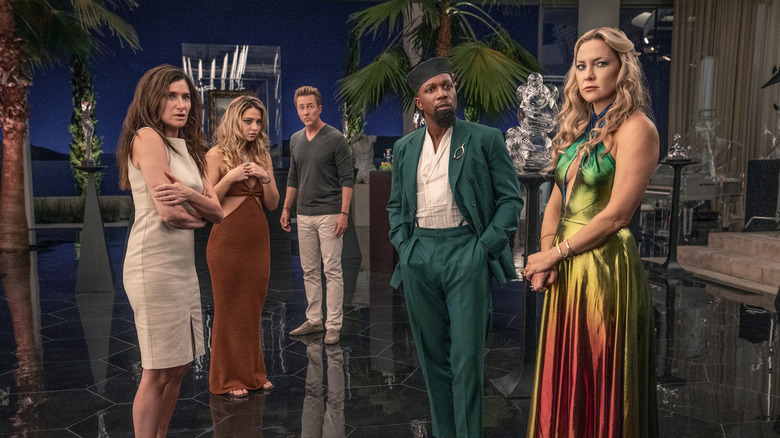
In the end, while everyone is a suspect in Duke's poisoning and Andi's suicide (as it turns out, Helen-as-Andi was inadvertently saved from a gunshot by a well-placed diary), the resolution of who's behind it all is the obvious one: Miles Bron himself, the richest of the rich, killed Andi and Duke, to further ensure that his idea-stealing will remain unknown. That Miles is not only Andi's killer but that he tried to kill Helen-as-Andi via Duke's loaded gun bothers Blanc most of all, because that is yet another idea Miles stole from someone else, Blanc himself. While Bron is perhaps the lowest of the low among this upper-class group, Johnson's script reserves scorn for the other disrupters: it's only after Andi uses a tiny piece of volatile rock that's being used to power Bron's mansion to destroy it that they all agree to speak out against him.
That speaks to the last aspect of "Glass Onion" that's most powerful, a heightened version of the common thread that "Columbo" always boasted. In that latter show, Columbo himself didn't have much crossover with his various suspects: it's not like it was an interconnected universe of some kind. (Thank goodness.) But there was a consistent enough subtextual commentary that the rich in Los Angeles thought they could get away with murder (literally) because the cops were just too stupid and trifling to catch them. In "Glass Onion," it's only briefly commented upon directly that Miles' group seems like a particularly motley crew. (Duke seems modeled at least partially on Alex Jones, while Claire is posited as a fairly liberal politician, as one example of characters seemingly at odds with each other.) Throughout, Benoit and Helen are among the top of the top, whether it's through offhand references to actors like Leto and Jeremy Renner, or cameos from Yo-Yo Ma and Serena Williams (the latter appearing in a particularly funny sight gag at Miles' island).
From the outside looking in, there are various factions of celebrities, some who are more outwardly kind and self-conscious than others, some who thrive on controversy, some who unknowingly court scandal. But from the inside of the glass onion of fame, they are – at least within the film – all hanging out together, thriving until someone from below them sneaks in and offers up a situation of genuine disruption; in this case, it's Helen laying waste to Miles' island, but first breaking every glass objet d'art she can grab. It's easy to love a show like "Columbo" for having its laid-back charms, its fine performances, and its memorable catchphrase, but the writers smuggled in social commentary calmly and methodically. "Glass Onion," a film being released by a disrupter of a streaming service, has its own gregarious charms, its own excellent performances, and plenty of dialogue that seems guaranteed to live on in meme form once this goes digital. But Rian Johnson has smuggled in an all-too-relevant social commentary about the haves and the have-nots, the kind a certain LAPD lieutenant would enjoy very much.
Read this next: The Best Movies Of 2022 So Far
The post How One of Glass Onion's Biggest Themes Directly Connects It to Columbo appeared first on /Film.
This Was Jack Nicholson's Secret To His One Flew Over The Cuckoo's Nest Role
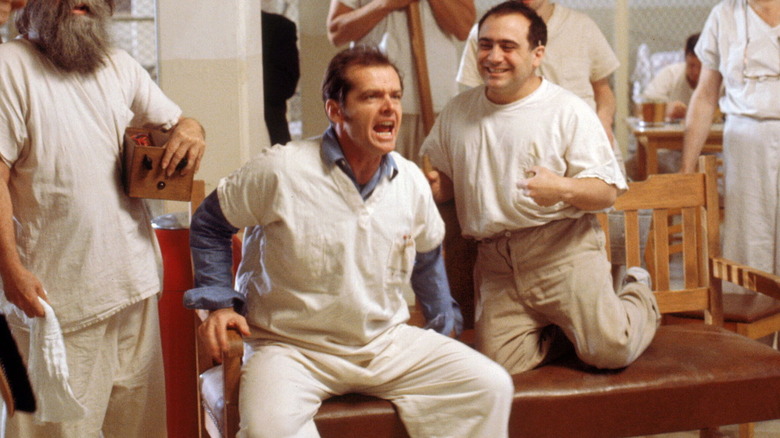
In the early stages of the troubled production of "One Flew Over the Cuckoo's Nest," potential director Hal Ashby suggested casting Jack Nicholson for the role of the movie's lead character, the swaggering scoundrel R.P. McMurphy. At this point in Nicholson's career, he was one of the most desired actors in Hollywood, fresh off yet another star-making performance in "Chinatown." The film's producer, Michael Douglas, was still unsure whether Nicholson was the man for the job, according to a 2017 Guardian piece. He knew Nicholson was talented, but he hadn't seen him play a role quite like McMurphy before.
Ultimately, while Ashby didn't end up directing — Miloš Forman would take on the project instead — Nicholson did star. While production had to wait for a gap in the actor's very busy schedule to start filming, it was worthwhile since the team got not only a fantastic performance but a leader on set. "Jack encouraged everyone to bring their A-game," said Douglas in the Guardian piece. "When you look at that baseball scene, with him rallying all the patients to watch the game on TV, that's just his inherent nature."
Like any good actor, Nicholson did extensive research for the role, from meeting actual patients in a psychiatric ward to even watching actual electroconvulsive shock therapy in preparation for his character going through the same. But according to Nicholson, the true secret to his performance in the movie came down to a secret character motivation, which he revealed in a 1986 New York Times interview.
''All right. The secret to 'Cuckoo's Nest' — and it's not in the book — my secret design for it was that this guy's a scamp who knows he's irresistible to women and in reality he expects Nurse Ratched to be seduced by him. This is his tragic flaw."
Enriching A Role
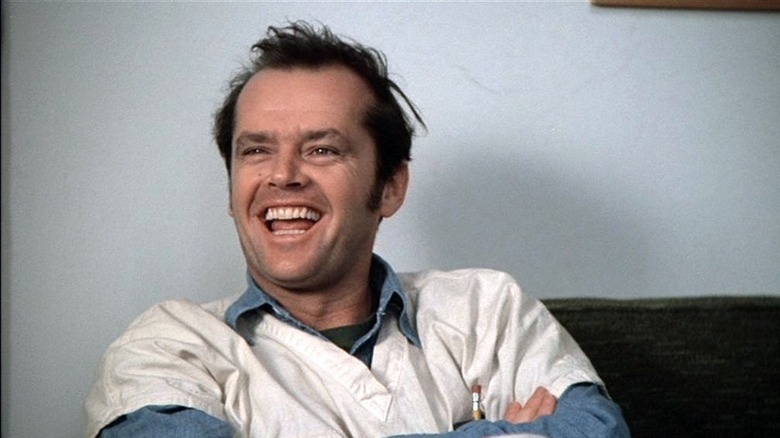
"One Flew Over the Cuckoo's Nest," which is based on a 1962 novel of the same name, follows the plight of McMurphy, a convict who feigns insanity in order to be put in a mental institution rather than prison. When he arrives, he immediately clashes with the austere Nurse Ratched, and begins a series of rebellious acts with his fellow patients.
Having read the book himself, according to a 1975 Rolling Stone piece, Nicholson went into the role with a decent understanding of his character as it was written originally. But as an actor who also excels in improv, Nicholson also built on the role as he did his research and began to embody the character. This is likely where he developed the notion that McMurphy would believe himself capable of wooing the stern Nurse Ratched.
Watching his performance, it makes some sense. McMurphy spends his time in the film rebelling against the nurses and the traditional structures at the mental institution. In these efforts, McMurphy has a smug attitude, as if he's completely certain that he'll be able to break the nurses and earn the ability to do whatever he wants. Nicholson brought this idea to his co-star, Louise Fletcher, who played Ratched, which he explained in the New York Times interview.
"This is why he ultimately fails. I discussed this with Louise. I discussed this only with her. That's what I felt was actually happening with that character — it was one long, unsuccessful seduction which the guy was so pathologically sure of.''
A Human Antagonist
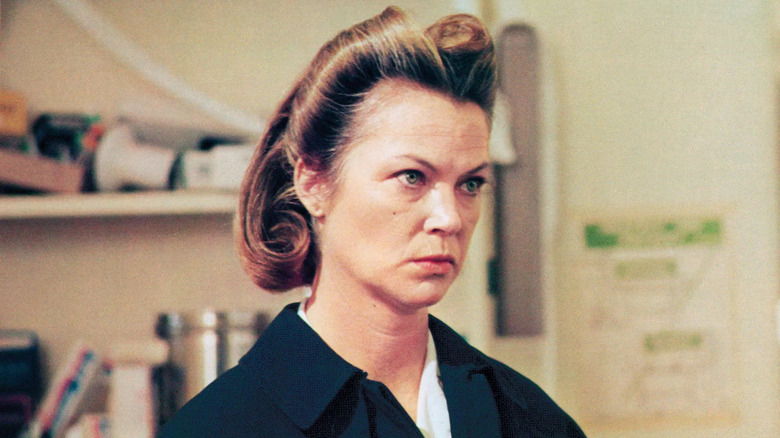
Nurse Ratched, a character who is so popular and widely discussed that it even spawned a "Ratched" spinoff series on Netflix, is the film's main antagonist and the foil to Nicholson's character. Even in her role as the movie's "villain," producer Michael Douglas wanted to make sure she was portrayed as human, which he explains in the Guardian piece.
"Making Ratched a human being was no small feat. You know nothing about her history, unlike McMurphy. I didn't want to make her a monster — I wanted to make her believable as a real person in those circumstances. I drew on the misuse of power, a prominent issue in those times with Nixon having been forced to resign. I saw very clearly how people can believe that they're doing good and they know best."
I believe the film succeeds in portraying a flawed, but realistic, person. Ratched runs the psychiatric ward like a prison, happy to manipulate the patients into staying in line and taking their medication on time. But in her mind, it's all for the good of the patients, who she sees as only as dangers to themselves and others. In order to protect them, she believes she must control them. Whether you agree with Ratched's viewpoint or not, it's a realistic worldview from someone who works in a psychiatric ward every day.
A More Complex Dynamic
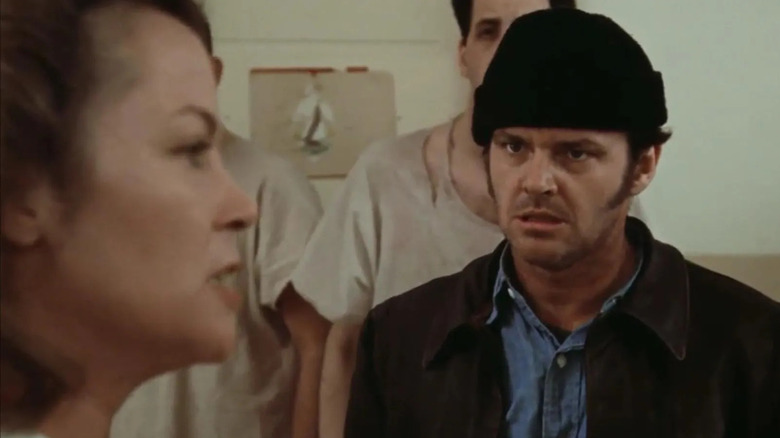
While Nicholson's secret motivation for McMurphy works fantastically well for his character, it also makes a ton of sense for Louise Fletcher's Nurse Ratched that she'd react the way she did to McMurphy. As Nicholson mentioned in the Times interview, Fletcher was the only other performer he let in on McMurphy's plan to seduce the nurse, implying that he wanted her to perform as if her character was aware of what McMurphy was doing.
Ratched was extremely cold and professional, but especially so towards McMurphy, whom she immediately shows great disdain for — another decision likely influenced by Nicholson's secret motivation. She knows what McMurphy is doing and is both disgusted and shocked by the complete confidence with which he believes he can get her to fall for him. It's this clash of personalities and goals that creates the extremely interesting and tense relationship around which "One Flew" heavily revolves.
There are very few people who'd dispute how special of an acting talent Jack Nicholson is. He brings a unique presence to each of his many iconic roles. His ability to hone an intense maniacal energy and an edgy charm was unmatched, and even the great director Stanley Kubrick believed he brought an "unactable quality" to his roles that nobody could replicate. And in "One Flew Over the Cuckoo's Nest," Nicholson showed once again that he not only possessed fantastic acting range, making a complete scumbag seem palatable, and even charming, but that he had the ability to enrich an existing story through the adding of further context. Nicholson's now retired, and seemingly spends most of his time sitting in great seats at Lakers games, and it's a well-deserved ending for one of the greatest actors of our time.
Read this next: The 14 Best Film Acting Debuts Of All Time
The post This Was Jack Nicholson's Secret to His One Flew Over the Cuckoo's Nest Role appeared first on /Film.
What Happened to Buddy Clause in The Santa Clauses?
Episode 3 of the Disney Plus series is nearly upon us to get us into the festive mood and before loyal fans of the franchise lose their sanity, we reveal what happened to Buddy Clause in The Santa Clauses.
The series is a follow-up to The Santa Clause 3 and the synopsis reads: “Scott Calvin is on the brink of his 65th birthday and realizing that he can’t be Santa forever…With a lot of elves, children, and family to please, Scott sets out to find a suitable replacement Santa while preparing his family for a new adventure in a life south of the pole.”
Showrun by Jack Burditt, directed by Jason Winer, and based on The Santa Clause by Leo Benvenuti and Steve Rudnick, The Santa Clauses is a sequel to 2006’s The Santa Clause 3: The Escape Clause and features returning stars Allen, Elizabeth Mitchell, Eric Lloyd, and David Krumholtz.
The Santa Clauses | Official Trailer | Disney+
What Happened to Buddy Clause in The Santa Clauses?
Twitter is outraged over the sudden name change of Scott and Carol’s son Buddy Calvin-Clause, but he’s actually just had a nickname added.
During The Santa Clause 3: The Escape Clause, viewers were introduced to Buddy as a baby, but in The Santa Clauses, Buddy has grown into a teen, played by Austin Kane.
Scott and Carol refer to him as “Cal”, but that’s only a nickname, as the character’s full name is credited as Buddy ‘Cal’ Calvin-Clause – what a mouthful.
We will likely hear Buddy’s parents call him by his legal name at some point in the series, so don’t worry, there hasn’t been a name change, but it is rather confusing.
Hey @DisneyPlus @Disney I have a bone to pick with you…Santa and Mrs. Clause's son's name is supposed to be BUDDY!! Who the heck is Cal?! #TheSantaClauses
— Mariah Ansell (@MSplittgerber) November 16, 2022
Meet the Cast of The Santa Clauses
Tim Allen has returned to play Father Christmas once more, alongside returning actors Elizabeth Mitchell, David Krumholtz, and Eric Lloyd as a grown Charlie.
New faces at the North Pole include Isabella Bennett’s Edie and Matilda Lawler’s Betty, and there will no doubt be a few other surprise guests along the way.
Below, we have compiled a full cast list for the series:
- Tim Allen – Scott Calvin / Santa Claus
- Elizabeth Mitchell – Carol Calvin
- Kal Penn – Simon Choksi
- Eric Lloyd – Charlie Calvin
- Austin Kane – Buddy “Cal” Calvin-Claus
- Elizabeth Allen-Dick – Sandra Calvin-Claus
- Matilda Lawler – Betty
- Rupali Redd – Grace Choksi
- Devin Bright – Noel
- David Krumholtz – Bernard
- Laura San Giacomo – Befana the Christmas Witch

How Many Episodes are in The Santa Clauses
The Santa Clauses is confirmed to have six episodes within its run and no second season is expected because it has been billed as a miniseries.
The show debuted with a double-bill premiere on Wednesday, November 16, 2022, and the final episode will air on Wednesday, December 14, 2022 – eleven days before Christmas.
Below, we have outlined the show’s full release schedule and we will update the final two episode titles when they are announced:
- Chapter One: Good To Ho – November 16, 2022
- Chapter Two: The Secessus Clause – November 16, 2022
- Chapter Three: Into the Wobbly Wood – November 23, 2022
- Chapter Four: The Shoes Off the Bed Clause – November 30, 2022
- Episode 5: TBA – December 7, 2022
- Episode 6: TBA – December 14, 2022

By Jo Craig – jo.craig@grv.media
The Santa Clauses is now streaming on Disney Plus.
The post What Happened to Buddy Clause in The Santa Clauses? appeared first on ForeverGeek.
NVIDIA driver 515.86.01 fixes Spider-Man Remastered, plus black screen issues on RTX 30
You can now run Linux GUI apps on Windows 10 as WSL launches on the Microsoft Store
Microsoft has announced that the Windows Subsystem for Linux (WSL) - allowing users to run Linux apps on Windows devices - is now generally available on the Microsoft Store. After a lengthy preview period, general availability means a few things, but the biggest news is for Windows 10 users.
SDL3 Begins Dumping A Lot Of Old Code: GLES1, OS/2, DirectFB, WinRT, NaCl & More
Watching Charles Bronson Go From Movie Villain To Leading Man Left An Impression On Quentin Tarantino
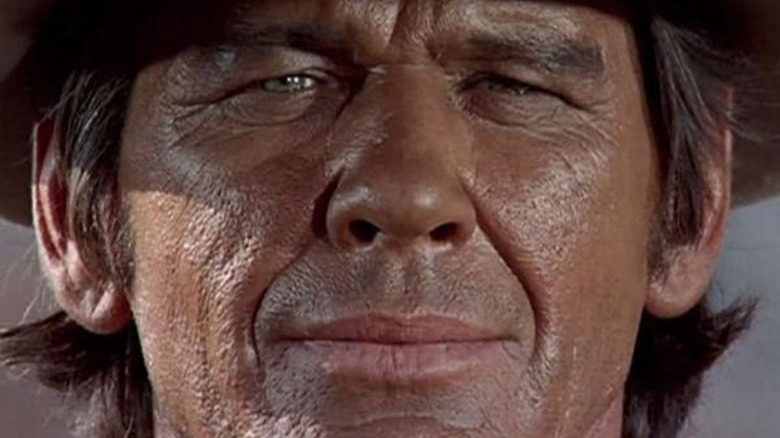
Continuing to promote his first nonfiction book "Cinema Speculation," Quentin Tarantino has been given the opportunity to relive his formative years as an obsessive moviegoer. Although it's a much more detailed, refined piece of writing that's more in line with Pauline Kael's seminal compendium "I Lost it At the Movies," Tarantino's deep dive into the male-driven, violent movies of the 1970s maintains a spirit of film-geekery that's also reminiscent of Patton Oswalt's memoir "Silver Screen Fiend: Learning About Life from an Addiction to Film."
There's a fundamental, profound difference between being an inveterate cinephile and just being a causal movie fan that can go on about their lives right when the lights come up. For full-blooded cinephiles like Tarantino, a movie has the potential to fuse to your very DNA. It can become a part of you, especially at the malleable age that a young Quentin was when he first discovered R-rated movies and a roguish Charles Bronson.
But Tarantino was also heavily influenced by television, where the lead character was often upstaged by a cooler sidekick or a guest-starring role featuring a captivating antihero. Bronson, before he was a star, felt like one of those characters and Tarantino was instantly drawn to that. According to a new interview with Deadline, Tarantino was a young teen when he discovered the biography "Charles Bronson Superstar," a book that features a list of every movie Bronson ever did. He started crossing them off the list one-by-one, just as Oswalt writes about doing in "Silver Screen Fiend," with the exploitation guide "Psychotronic Encyclopedia to Film" by Michael Weldon.
Judging from the colorful collection of characters that Tarantino has created to date, it's not difficult to see how influential Bronson became to an impressionable teenager that would later become a revered auteur.
A 'No-Nonsense Attitude'
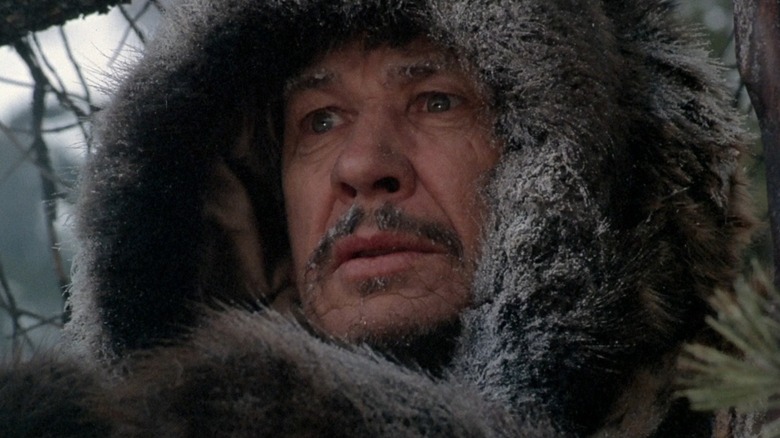
The 1970s emanated a steady vibe of breezy coolness that lionized smooth criminals like Bronson in "The Mechanic" or Steve McQueen in "The Getaway." When mainstream culture was worshipping McQueen's imitable style, Tarantino seemed more taken with Bronson's unique onscreen presence. "There's nobody that looked as cool as Charles Bronson in the '70s as far as I was concerned," Tarantino told Deadline. There was something else going on with Bronson, besides his "no-nonsense attitude," that Tarantino also picked up on. "He was also funny with his lines and had that cool way of talking. His movies were exciting, and he was just a really cool presence."
Looking even deeper, Tarantino touched on the types of characters he gravitated towards, which goes back to his younger days in front of the television. "Oftentimes, I'd be rooting for the villain," he explained. "I liked the villain more than the lead guy. Sometimes I'd like the sidekick more than the lead guy. It was more about the actor."
Slowly but surely, Bronson began to transition out of the villain role without ever losing that certain irresistible je ne sais quoi that Tarantino and so many other fans saw in him. That arc would eventually be seen in the roles Bronson chose, going from the victim to the avenger in "Death Wish" or moving from the hunter to the hunted in "Death Hunt," a defining role that was strikingly similar to Sylvester Stallone's portrayal of John Rambo in "First Blood."
Rooting For The Villain
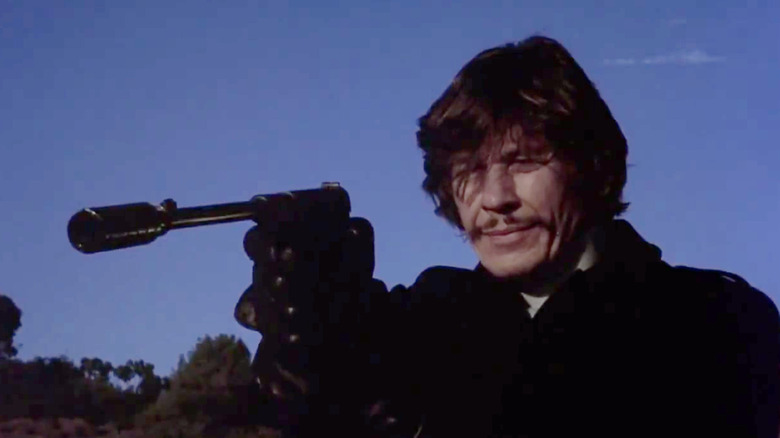
When Bronson made the leap to more heroic roles, Tarantino and fans of Bronson still noticed his bad side peeking through, an attribute that would continue to make his characters seem more complex than they really were. That edge Bronson walked on could go both ways, especially in earlier films like "The Mechanic" where Bronson's veteran hit man, Arthur Bishop, paints himself as more of an artist than a killer.
In Bronson, Tarantino may have found his ultimate muse. Or at least the male counterpart to Uma Thurman, the star of "Pulp Fiction" and main inspiration for The Bride in "Kill Bill." The bad guys are just more interesting, a fact Tarantino is well aware of, telling Deadline:
"Since I did find myself leaning more to the actors that were playing the bad guys, when Charles Bronson would come along, after a whole career playing bad guys and still looking like a movie villain even though he's the lead, I think that is part of the reason I was attracted so much to him."
There could be an entire book comparing characters like Mr. Blonde in "Reservoir Dogs," Hans Landa in "Inglourious Basterds," and Cliff Booth from "Once Upon a Time in Hollywood" to Bronson's most famous roles. Analyzing the more obscure, lesser known parts from Bronson's legendary career to look for hidden inspiration would be worth investigating, too, especially considering that Tarantino has likely seen every single one of them.
Read this next: 13 Tarantino Projects We Never Saw But Wish We Could've
The post Watching Charles Bronson Go From Movie Villain To Leading Man Left An Impression On Quentin Tarantino appeared first on /Film.
Power Rangers' Jason David Frank Once Had A Playground Brawl With Fellow '90s Icon Steve Urkel
Tragedy breeds fond reminiscence. In November 2022, Jason David Frank, who starred as Tommy Oliver in the 1993 live-action superhero series "Mighty Morphin Power Rangers" and almost every subsequent "Power Rangers" story, died at the age of 49. Other Rangers came and went with each fantastical iteration, but fans could confidently rely on the Green Ranger — or the White Ranger. The man bore a million monikers — always present whenever the world was in peril. No official cause of death has been reported, although speculation has been unkind in its stead. In the wake of such a sobering moment, craving gentle comfort is only natural.
That's where we can help. The original run of the "Mighty Morphin Power Rangers" ran concurrently with a number of popular family sitcoms, like "Boy Meets World" and "The Fresh Prince of Bel-Air." Only one of them, though, saw Frank don a set of night-black baggy clothing, not too distantly related from his more familiar gee, to do glorious battle with the legendary Jaleel White. Doesn't sound familiar? That's fair, it was almost 30 years ago. Stick around for a second so that we can remember a very strange episode of "Family Matters" together.
Sci-Fi Meets Martial Arts When Skull Meets Urkel
"Family Matters" is a memorable family sitcom that originated as a spinoff from "Perfect Strangers," a family sitcom from the mid-1980s. Hollywood's always been doing spinoffs, friends. It's nothing new. The story was supposed to center around the Winslow family but their squeaky little neighborhood — who was only supposed to appear in one episode — ended up stealing the show right out from under their feet. Kind of an odd beginning for Steve Urkel, the loveable trainwreck, right? Played by Jaleel White, Urkel was ... a lot. Endearing and witty and hellishly destructive, Urkel's shenanigans were quite literally boundless.
In season 8 episode 8, entitled "Karate Kids," Urkel steps into his transformation chamber (Oh yeah, "Family Matters" is pretty much science fiction) to become a variant of Bruce Lee so that he and his friends can fight a street gang that has taken over a local park. Any guesses as to who is part of that street gang? Jason David Frank portrays Skull, a member of the villainous street gang. We'd say that the name is a reference to a character that Tommy Oliver dealt with in the earliest days of "Mighty Morphin Power Rangers" but everything and everyone in the 1990s was seemingly named like a cringey gamertag, so it's hard to really say for sure.
Jason David Frank Knows How To Fall With Style
The ensuing brawl was just as ridiculous as it sounds. "Family Matters" let Jason David Frank flex his acrobatic and martial arts abilities in a space where he didn't have to look cool. Frank understood the assignment, too, because he sold his shameless takedowns with the same intensity that he would pilot the Megazord. He crashed into a bench, toppling the whole thing. He crashed into a concrete building and he crashed into a spring rider (one of those outdoor rocking horse things). Between hits, he spun and kicked like a human tornado, but Urkel outmaneuvered him at every turn with the magic of plot armor and a dash of painfully outdated racial stereotypes.
The poor guy took a cartoon-esque beating, complete with silly sound effects. He even managed to perfectly imitate the "a protagonist beat me up so badly that my head is spinning" head ... spin ... thing before sprawling on the ground, dazed and defeated. Is there even a name for that? There should be.
It might have been a bit part for Frank, one that maybe he even left on the cutting room floor of memory, but those fleeting seconds of screen time are still enough to elicit a warm smile from a fan base in mourning. Hopefully, we'll get to see Frank in action one last time, if his final movie ever gets released, that is.
Read this next: The 15 Best '90s Comedies Ranked
The post Power Rangers' Jason David Frank Once Had a Playground Brawl With Fellow '90s Icon Steve Urkel appeared first on /Film.
Jim Carrey Pitched Daniels Directing Duo A Wild Idea For A Found-Footage Horror-Comedy
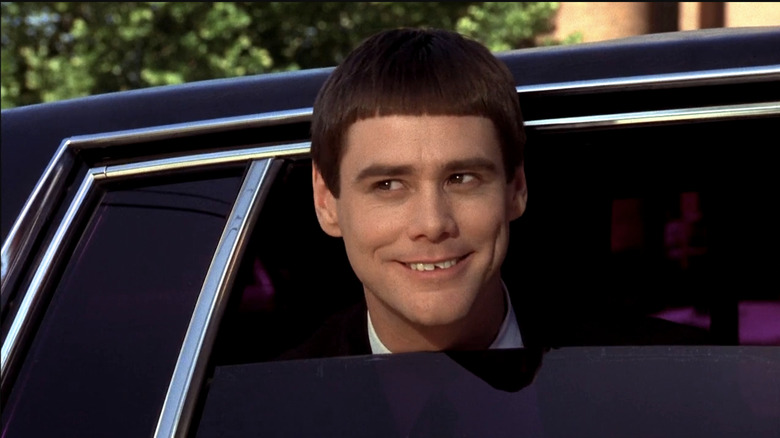
The directing duo known as Daniels (Daniel Kwan and Daniel Scheinert) are two of the most exciting voices working in cinema today. After getting their start directing evocative music videos like "Turn Down For What" by DJ Snake and Lil Jon, the two have evolved their incomparable styles into some of the most compelling feature films in years.
Their first, "Swiss Army Man," was promoted as "the Daniel Radcliffe farting corpse movie," but turned out to be one of the most moving examinations of humanity and why life is worth living even when things feel absolutely hopeless. Their latest, the stunning "Everything Everywhere All At Once," is already a front-runner for Oscar contention, even with scenes including hotdog fingers and a martial arts fight scene with visible buttplug flares. It seems as if there's nothing too weird or too out of left field for Daniels, which is probably why funnyman Jim Carrey once pitched them a found-footage horror-comedy.
During a recent interview with Entertainment Weekly, Daniels spoke about the time they briefly considered making a film about the making of "Dumb and Dumber" through the lens of found-footage horror. Daniel Kwan says that Carrey reached out to the two, very early in their careers, with a ridiculous (and yet possibly brilliant) idea for a horror film:
"He had just seen 'Paranormal Activity' and was like, 'Guys, it's found-footage and it's horror — have you seen it?' And we were like, 'Uh-huh, we've heard of it. Where is this going?' And he was like, 'I haven't seen anyone do that — but with comedy. And I have this great idea.'"
'So You're Telling Me There's A Chance!'
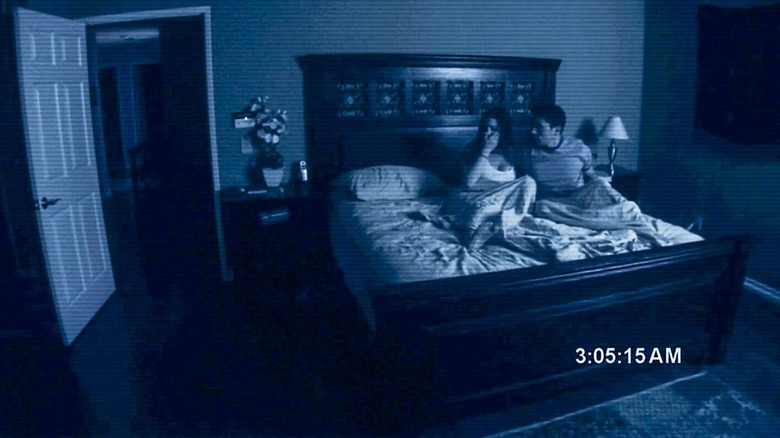
"Dumb and Dumber" is a certifiable comedy classic at this point, starring Jim Carrey and Jeff Daniels as two imbecilic best friends who travel to Aspen, Colorado to return a lost suitcase that turns out to contain a ransom payment, putting the duo unwittingly in the crosshairs of some perilous people. The film's climax takes place at a beautiful resort, which also happens to be The Stanley Hotel, the allegedly haunted locale that inspired Stephen King to write "The Shining." After watching "Paranormal Activity," Jim Carrey felt inspired and called up Daniels to pitch his idea.
"Basically, the set of 'Dumb and Dumber' was famously a haunted set," Daniel Kwan tells Entertainment Weekly. Carrey reported that objects broke, people were injured, and things were moving on their own during production. "Dumb and Dumber To" was about to start production, and Carrey wanted Daniels to film a found-footage horror comedy on the set. As Kwan recalls, Carrey wanted the duo to make a feature-length, behind-the-scenes film that slowly transforms into a horror film. "We're like, 'OK, we're in. This is amazing.' We wrote a whole outline and were really excited," Kwan says.
Unfortunately, the duo pitched the idea to the producer who wasn't nearly as enthused. "I'm sorry, Jim got really excited, but there's no way the studio is going to let us do a movie while they're shooting 'Dumb and Dumber To,'" Kwan remembers the producer saying.
Probably For The Best
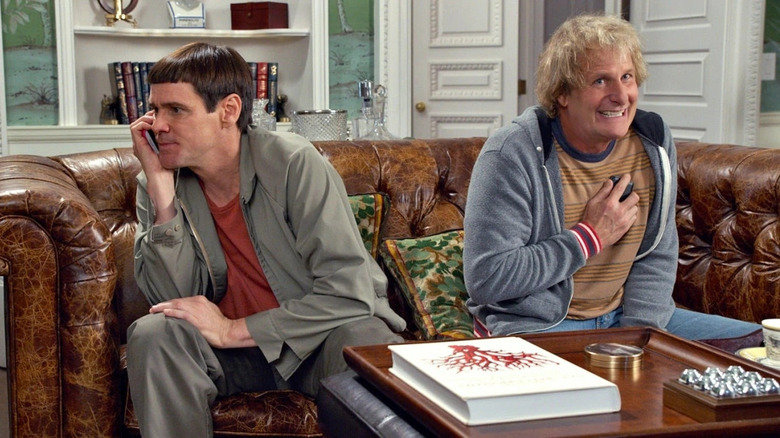
The idea of a behind-the-scenes featurette transforming into a found-footage horror film, especially one that would have starred Jim Carrey, Jeff Daniels, Rob Riggle, Laurie Holden, Kathleen Turner, and containing a Bill Murray cameo, is a genuinely brilliant idea. Daniels could have sincerely changed the game of both found-footage horror and horror-comedies in one fell swoop, which could have potentially brought them the financial security to make whatever weird and heartfelt stories struck their fancy.
Of course, everything happens for a reason, and it's possible that the success of a "Dumb and Dumber" found-footage horror-comedy would have changed the timeline that allowed them to create "Swiss Army Man" and, perhaps more importantly, "Everything Everywhere All At Once." Additionally, the production of "Dumb and Dumber To," while not haunted, was plagued with problems of its own.
It was declared by the United States government that "Dumb and Dumber To" and "Daddy's Home" were financed by stolen, foreign money. The U.S. Justice Department said millions of dollars in illicit cash were channeled through Red Granite Pictures, one of the production companies that helped produce the film. The studio denied knowingly accepting the money but eventually paid $60 million in a settlement. Thank the Everything Bagel that Daniels didn't get tied up in that mess.
Read this next: The Best Movies Of 2022 So Far
The post Jim Carrey Pitched Daniels Directing Duo a Wild Idea for a Found-Footage Horror-Comedy appeared first on /Film.
Why Deep Space Nine's Quark Is The Greatest Star Trek Character
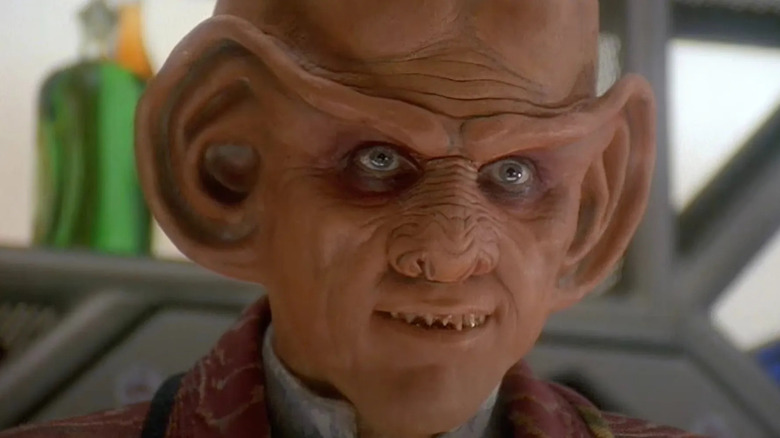
When it first began airing in 1993, "Star Trek: Deep Space Nine" was instantly considered a notable oddball in the broader "Star Trek" canon. For one, it was the first Trek project that was made completely outside of the auspices of Trek creator Gene Roddenberry. Also, being set on a space station, there was going to be considerably less trekking on "Deep Space Nine" than had been previously seen in the franchise. Additionally, the show was to follow the politics and social intricacies of worlds that did not belong to Trek's famed United Federation of Planets. That meant the franchise's notable and vaunted post-war, post-religion, post-capitalist utopia was going to be challenged by those who believed in war (the Cardassians), in theocracy (the Bajorans), and in capitalism (the Ferengi). "Deep Space Nine" stood as a deliberate challenge to the Treks that preceded it. Can Roddenberry's ideals stand when those who abide by them are outnumbered?
The lessons from "Deep Space Nine" were more forthrightly multicultural than the relatively mannered "Star Trek: The Next Generation." While NextGen was populated by diplomats and open-minded explorers of cultural differences, it was rare that any of them were pushed too far outside of their comfort zones; how strange, Counselor Troi might find, that a new species enjoys chocolate so much. On "Deep Space Nine," the Starfleet characters had to face the notion that people bearing opposite values to their own were going to remain deeply and strictly adherent to them. A soft version of easily-acquired arbitrage would have to be abandoned for the notion of having to live with someone you fundamentally disagree with ... and do not necessarily hate.
No character on DS9 was more deeply principled than Quark (Armin Shimerman), the Ferengi bar owner on the station's high-traffic Promenade.
Quark
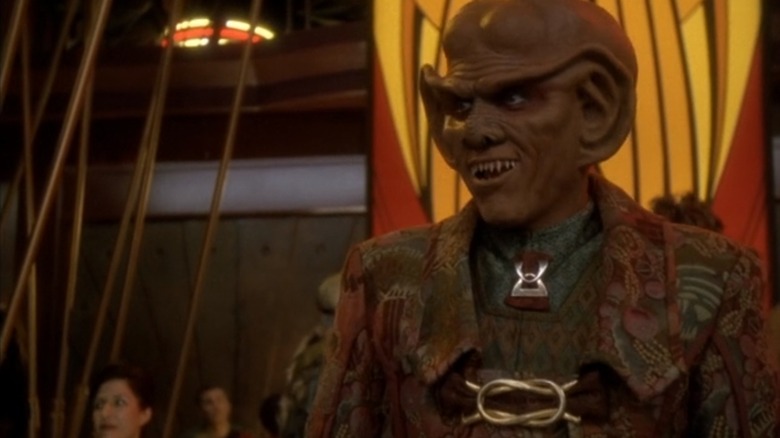
For the uninitiated, the Ferengi are a species that has devoted every aspect of their society to commerce. Money is deeply involved in every aspect of their lives. When friends come to visit a Ferengi, they have to drop money into coin boxes in every room in the house. When a Ferengi dies, their ashes are sold inside miniature collectible discs. Even their central religion is based on profit, as a Ferengi will not be able to buy their way into the afterlife unless they have acquired enough wealth in this one. Their most widely read holy book is simply a list of 285 Rules of Acquisition. Needless to say, devotion to wealth also carries with it a tendency toward both labyrinthine accounting and a propensity toward confidence schemes. Cutting corners, buying cheap materials, and underpaying employees is a great virtue in Ferengi society. The most grievous sin is charity.
Additionally, Ferengi society is staggeringly sexist. Only men are allowed to earn wealth, whereas women are not allowed to speak to any men other than their immediate family. They are also not allowed to wear clothing. Over the course of "Deep Space Nine," Ferengi sexism will be challenged time and time again, with Quark having to face the fact that his mother Ishka (Andrea Martin, then Cecily Adams) has been secretly leading the charge toward a women's liberation movement back on their home planet.
Quark, throughout the series, is deeply devoted to these Ferengi principles. They may seem backward and even gross to a human viewer, but Quark never once winks at the camera, nor does Shimerman plays the character as wicked. Devious, perhaps. Criminal, to be sure. But not sadistic or cruel. Indeed, Quark is typically either upbeat (when business is booming) or annoyed (when it isn't).
Criminal, But Not Evil
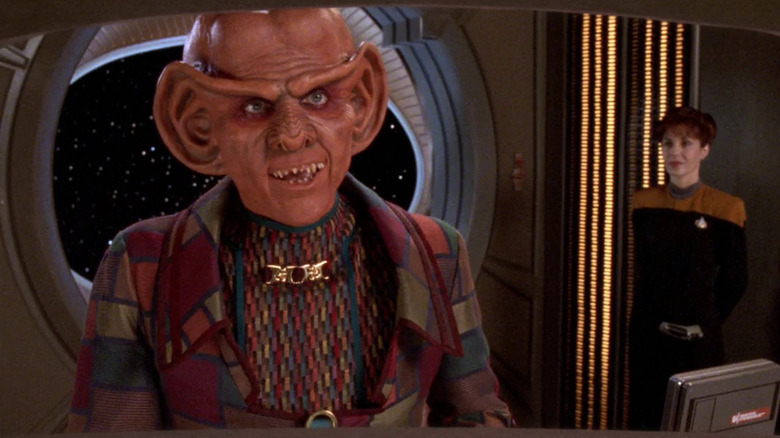
Quark is perpetually annoyed, incredibly shrewd, and often called out on his bad behavior. But — and here's what makes his character so appealing — he never abandons the fundamental things that make him who he is. His personal beliefs are dearly held, and he will not — will not — abandon them. In a true science fiction sense, Quark provides an outsider perspective on humanity, looking to their habits of charity and their baffling abandonment of capitalism as strange and offputting.
Something magical happens on "Star Trek" when two nonhuman characters interact. Humans, in subsequent discussions, become ineffable and confusing. Our culture is just as strange to them as theirs is to us. Starfleet may be making a perpetual effort to include and understand others, but Ferengi have no such compunction, choosing to criticize and deconstruct some of our own fineries. In one of the best scenes of the entire series, Quark has a conversation with Garak (Andrew Robinson) a Cardassian tailor who once served the war effort. Neither character has spent much time with humans, and each bemoans the fact that so many of them have just moved onto the station. As an example of how bad humans reflect on his business, Quark serves Garak a glass of root beer. Garak hisses that it's vile. "I know," Quark says, disgusted. "It's so bubbly, and cloying, and happy."
"Just like the Federation," Garak says.
"But you know what's really frightening? If you drink enough of it, you begin to like it," Quark says. "Just like the Federation."
Being bubbly and eager to please, the two aliens note, shows a grievous lack of character. The Federation, Quark says out loud, has a lot to be wary of.
Quark's Moment
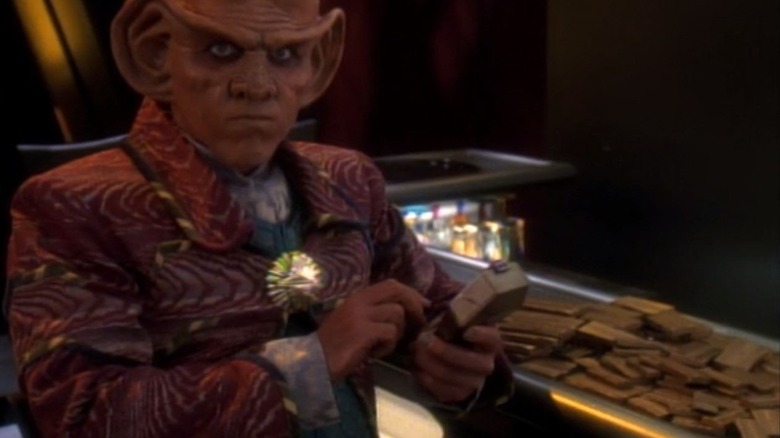
Quark and the other Ferengi characters on "Deep Space Nine" were often treated like comic relief, and one can bet that a "comedy" episode was likely about Quark and his family (his brother Rom, played by Max Grodénchik, often had "dim bulb" scenes). It took "Deep Space Nine" a while to decide just how intelligent Quark was meant to be (a frustration for Shimerman), often seeing him vacillate between crafty and clueless. It took "Deep Space Nine" several years to allow the Ferengi characters to grow. Rom was revealed to be a decent, kind man with sharp engineering skills, and Rom's son Nog (Aron Eisenberg) wanted to become a Starfleet officer.
Quark, meanwhile, was eventually allowed to be intelligent and deeply righteous. Even honorable. The character's best moment probably came in the penultimate episode of the show, "The Dogs of War" (May 24, 1999) wherein Shimerman gets to express the deep, glorious beliefs of the character. "As far as I'm concerned," he says, "the Ferenginar that I knew doesn't exist anymore." He says "This establishment will be the last outpost of what made Ferenginar great: the unrelenting lust for profit."
What he is standing for might look petty to the human audience, but after seven seasons with Quark, they have most assuredly come to sympathize with him. So when Quark says he won't preside over the demise of Ferengi civilization, we see a man standing up for himself. We see a man eager to keep his ideals. "The line has to be drawn here!" he shouts. "This far and no further!"
Quark is willing to exploit, but he is also willing to play by his own rules. And what is "Star Trek" if not strong-willed adults articulately standing up for what they believe in?
Read this next: 14 Underrated Star Trek: The Next Generation Episodes
The post Why Deep Space Nine's Quark is the Greatest Star Trek Character appeared first on /Film.
Jason David Frank Turned A 10-Episode Contract Into A Nearly 30-Year Career
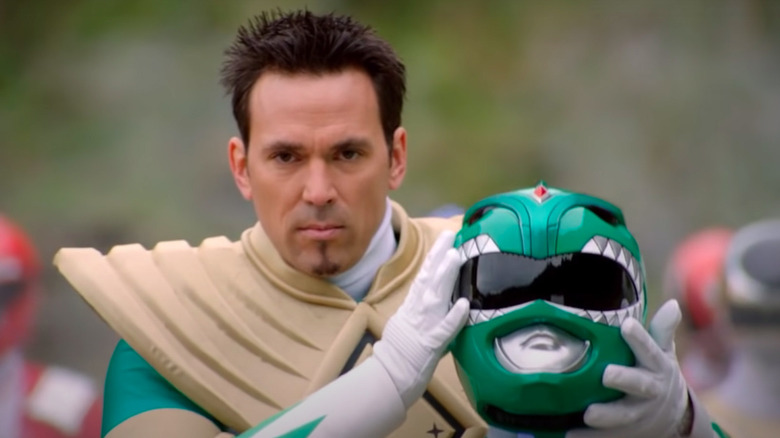
"Power Rangers" was one of the biggest franchises of the '90s — it brought tokusatsu to the West, it was a franchise with some of the coolest theme songs, and it also introduced superheroes to a whole generation. Despite its cheap look and extremely corny dialogue and storylines, "Power Rangers" always offered big excitement, lots of cool costumes and robots, and a (sadly) rare superhero team with diversity. There is at least one ranger that looks like you in the show.
Because of the neverending nature of "Power Rangers," and its revolving door of cast members and characters, we rarely see a ranger evolve beyond your typical "shy person gets confident, gains power, then disappears by season's end." There have been over 500 rangers and over 900 episodes across three decades' worth of seasons, but there's no denying that "Power Rangers" has been defined by a single face, the one that got the most character development over the years: Tommy Oliver, as played by the late Jason David Frank.
What started as a one-time villain evolved into a fully-fledged member of the team, then a leader, and a legend. Tommy is one of the most endearing characters on the show, its most iconic, and the purest representation of what a Power Ranger is. The MCU had Robert Downey Jr.'s Tony Stark, and the "Power Rangers" had Jason David Frank's Tommy. This is a tribute to the man that was the face of a franchise, the man who turned a tiny 10-episode guest-starring role into a 30-year career.
A Redemption Story
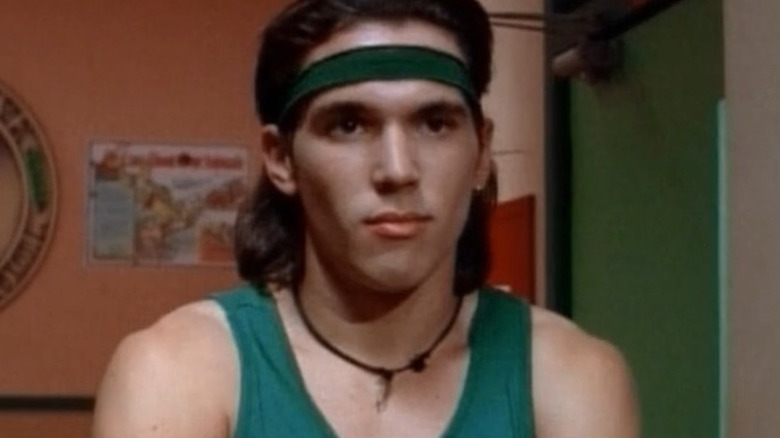
Tommy Oliver was first introduced in the original series's five-part episode "Green with Evil" as a new student at Angel Grove High School. Right from the get-go, Tommy was the epitome of the show's idea of "teenagers with attitude" who are meant to be the best candidates to be Power Rangers. He exudes coolness, is better at martial arts than even the Red Ranger, flirts with the Pink Ranger, and is a bit of an overconfident rebel.
This made him a perfect candidate to be the very first evil Ranger when he gets kidnapped by Rita Repulsa and enchanted to become her servant. As the show's first big villain who wasn't a goofy, alien-looking creature, but a teenager, Tommy was threatening, he was charismatic, he was dangerous.
And even when he got freed from Rita's magic, and despite not really being in control of himself while acting as the Green Ranger, Tommy fought and worked to atone for his sins by helping the Rangers. Even as he found out his powers could disappear at any minute, he still fought alongside the Rangers. Years before Zuko in "Avatar: The Last Airbender," Tommy Oliver had the best redemption story in an American children's show.
As a reward for his actions, Tommy later becomes the White Ranger, the new leader of the team. He would remain the leader for a few years, as some of the original Rangers left and new ones arrived, even as the show turned away from dinosaurs into sci-fi and shortly before it left Earth to go to space. All throughout this time, Jason David Frank played Tommy as a bonafide superhero, a teenager with great bravery who had gone through hell and come back the other side wiser and stronger.
A Leader
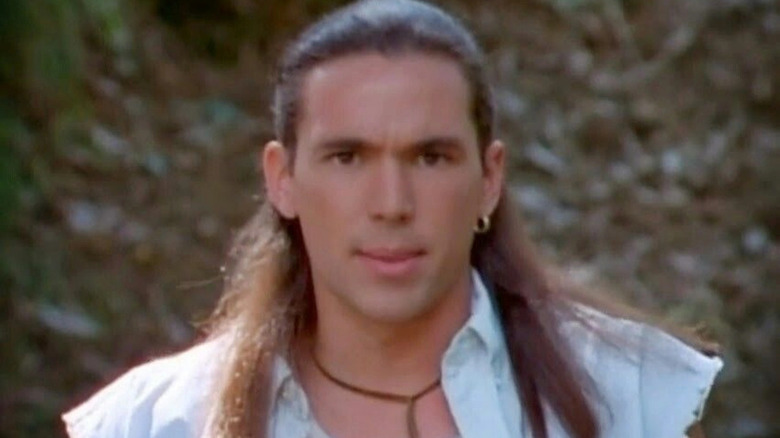
While the franchise kept changing and introducing new elements, Tommy remained the only constant. It was only when Tommy was sent to college that he gave up the mantle of Ranger, as "Power Rangers" gave us something extremely rare for a franchise like it: closure. His story was done, he accomplished everything that could have been accomplished, and he was getting a normal life as a reward.
But Jason David Frank wasn't done, because seven years after his departure from the franchise at the start of "Power Rangers: Turbo," he made a surprising and triumphant return in "Power Rangers: Dino Thunder." What could have easily been a desperate attempt at bringing attention to a declining franchise instead became the show's best use of Frank since his stint as a villain, and Tommy's best role: as a mentor.
You see, after earning a Ph.D. in paleontology at MIT, Tommy becomes a sort of new Zordon, creating a new set of zords and waiting to recruit the next generation of Power Rangers. He still fights as a member of the team — not losing any of his martial arts skills — while providing knowledge, wisdom, and tech to the new Rangers.
A Mentor
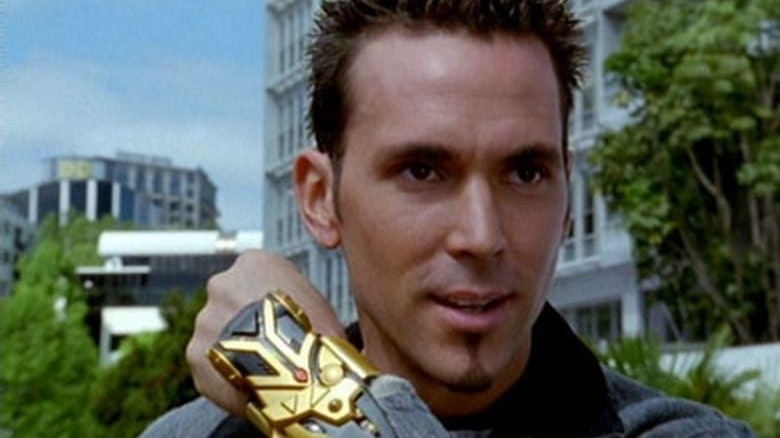
This was pretty significant, both to the franchise and to its young audience. While "Power Rangers" had a revolving door of actors that seemed to leave just before they turned old or dull, having Jason David Frank return as an older but still badass Ranger was significant. It showed kids that being a hero isn't like being an athlete, and it doesn't stop in your 30s. Jason David Frank could have been just another guest star, a cool villain to be defeated by the Power Rangers, never to be seen again. Instead, he became the best Ranger ever, a leader, a team player, a mentor, and a legend. Jason David Frank wasn't there when "Power Rangers" first began, but he became an intrinsic part of the franchise, and the epitome of what a Power Ranger can be.
Read this next: The Best Movies Of 2022 So Far
The post Jason David Frank Turned a 10-Episode Contract Into a Nearly 30-Year Career appeared first on /Film.




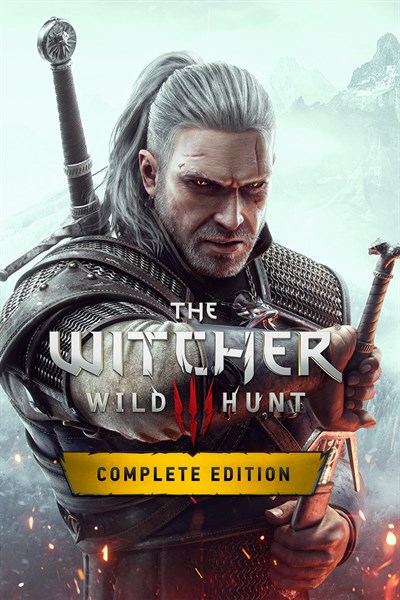
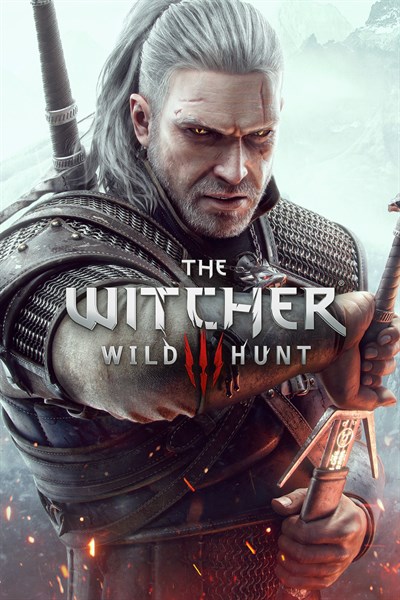
![[GOG] (Game) Narita Boy [GOG] (Game) Narita Boy](https://external-preview.redd.it/IksGMwvHS2OYOTC3dzmwF3nLeueINse8eo78KgOQ5EM.jpg?width=640&crop=smart&auto=webp&s=05fa6063487f45ad64c21861f067f41ace91ab8d)

